ISBN 0-86619-124-0
[C] VITA. Inc. 1979
VITA 1600 Wilson Boulevard, Suite 500 Arlington, Virginia 22209 USA Tel: 703/276-1800 . Fax: 703/243-1865 Internet: pr-info@vita.org
TABLE OF CONTENTS
1 Deciding what to grow
2 Learning to sow
3 Step-by-step gardening guide
4 Planting directions for each vegetable
INTRODUCTION
Gardening with the Seasons has been adapted from a booklet prepared as part of an innovative and meaningful approach to community development that is underway in Bangladesh. The Sylhet Package Program is funded by International Voluntary Services, Inc. (IVS), a respected US-based private development organization, in cooperation with three local agencies--the Rural Development Training Institute, the Bangladesh Rural Advancement Committee and the Government's Integrated Rural Development Program. In summary, the "package" project involves extension work to promote production of vegetables, high-yielding rice, fish, and ducks; health and family planning; functional education; and cooperative development.
Mr. Attfield, the author, has been associated with VITA as an expert Volunteer and is the author of a number of books and articles, including Raising Rabbits, published by VITA. VITA is pleased to be able to make available the work of this author and the fine program of which he is a part.
DECIDING WHAT TO GROW
Generally people plant the vegetables they like to eat. But good gardeners should also consider food value because some vegetables are richer in value than others. Vegetables should be selected that are easy to grow under local soil conditions, add richness to the soil, and are resistant to insects and disease.
Fresh vegetables are an excellent source of minerals and vitamins. They contain many of the minerals, such as calcium and iron, which the body utilizes to make bone, teeth and blood. They also provide important vitamins, mainly Vitamin A, the B vitamins, and Vitamin C.
Vitamin A is needed for healthy eyes and good vision. A lack of this vitamin can cause eye disease and even blindness among children. The best source of this vitamin is dark green, leafy vegetables, yellow fruits, yellow sweet potato, butter, eggs and liver.
B vitamins are needed for healthy skin, eyes, nerves, and good blood. A lack of these vitamins can cause poor blood (anaemia), weakness, dry scaly skin, swelling of the body, and even poor mental health. The best source of these vitamins is green. leafy vegetables, pulses (beans, peas, soybean, peanut, dhal, etc.), raw hand-pounded or par-boiled (cooked in the husk) rice, whole wheat flour (atta), meat and liver.
Vitamin C helps prevent infections, helps cuts and wounds to heal quickly, and keeps the gums around the teeth healthy. The best source of this vitamin is green leafy vegetables, guava, papaya, amlaki, oranges and lemons.
Charts 1 and 2 show which vegetables are the richest and poorest source of these important vitamins and minerals. A regular supply of fresh vegetables from the garden can mean good health and good eating for the whole family.
CHART 1
GARDEN VEGETABLES CONTAINING LOTS OF VITAMINS AND MINERALS
Listed in order of their richness or food value. Underlined items show which part of the vegetable contains the most food value.
- Black Colocasia leaves
- Carrot, leaves and root
- Turnip leaves
- Beet leaves
- Fenugreek leaves
- Radish leaves
- Pigeon peas, tender
- Kohlrabi leaves
- Sweet potato (red)
- Red Amaranth (Lal shak)
- Green Amaranth (Makhon sheem) kumra shak) (Danta shak)
- Mint leaves and leaves (Pudina pata) (Utchay and Karolla)
- Celery leaves (Randuni shak)
- Coriander leaves
- Indian Spinach
- Cowpea, leaves
- Soybean, green beans
- Cauliflower, flower
- Broccoli
- Jute leaves (kochi Orhar) (Patt shak)
- Spinach
- Mustard, arden
- Sword bean, tender leaves (Misti 11. Green Amaranth (Makhon sheem) kumra shak) (Danta shak)
- Bitter gourd. gourd (Badha Kopi)
- Chinese cabbage, (Krisno kochu pata) (Ohonia pata) pak-choy and pe-tsai
- Okra (Gazor) (Puee shak) (Dherosh)
- Sweet corn, (Shalgom pata) pods (Barboti) tender (Bhutta)
- Peas (Beet pata) (kochi Soybean) (Motor)
- French beans (Methi pata) and leaves (Farash) (Fool kopi)
- Potato, leaves (Moola shak) (Broccoli) and tuber (Gol aloo)
- Tomato (Tometo)
- Pointed gourd, (Olkopi shak) (Palang shak) gourd and leaves (Patol)
- Onion leaves
- Sweet pumpkin
- Cabbage
- Colocasia root (Mookhi)
- Lettuce, leafy (Salad pata)
CHART 2
GARDEN VEGETABLES CONTAINING VERY FEW VITAMINS AND MINERALS Listed in order of their food value
- Eggplant
- Ash gourd (Begoon) (Chal kumra)
- Onion, small red 10. Radish root (Piaj) (Moola)
- Pumpkin, yellow 11. Snake gourd (Holud kumra) (Chichinga)
- Beet root 12. Vegetable marrow (Beet) (Dhundul)
- Colocasia stem 13. Bottle gourd (Mukheer data) (Lau)
- Pumpkin flowers 14. Cucumber (Kumra fool) (Shosha and Kira)
- Coco yam
- Momordica c. (Chupri aloo) (Kakrol)
- Turnip root 16. Ridge gourd (Shalgom) (Jhinga)
CHART 3
VEGETABLES EASY TO GROW AND RICH IN VITAMINS AND MINERALS
- Black Colocasia
- Carrot
- Indian Spinach
- Sword Bean
- Radish (for leaves)
- Bitter Gourd
- Green Amaranth
- Okra
- Cowpea
- Soybean
- Jute
- Mustard, garden
- Pigeon Pea
- Field Bean
- Sweet Potato
- French Beans
- Red Amaranth
- Pointed Gourd
LEARNING TO SOW
Many garden vegetables have traditional planting seasons, as shown in Chart 4. While the customary months for preparing the ground and sowing the seeds are during winter, some vegetables can be planted and grown at almost any time. In order to keep a garden producing the year round, proper planting schedules need to be established and followed. The Planting Calendar
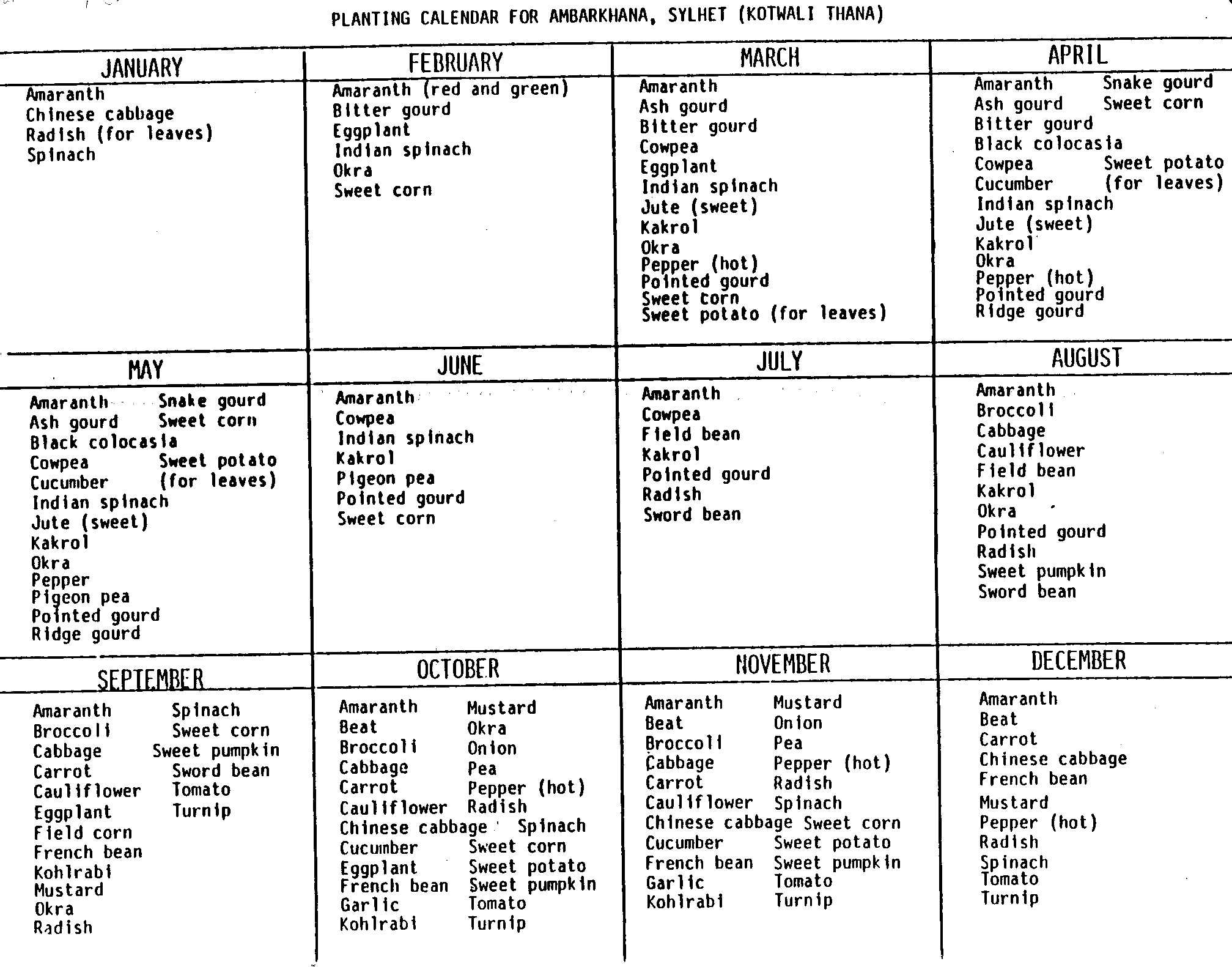
shown on the next page was used in Sylhot. This calendar should serve the home gardener only as a guide because different geographic regions will have different climates. Each gardener should familiarize himself with local variations in climate and try different planting times. Only then will he be able to set up a Planting Calendar based on the climatic conditions of his region.
CHART 4
VEGETABLES AND THEIR SEASONS
Summer Winter Round the year
Ash gourd Beet Mustard Black colosasia
Bitter gourd Broccoli Onion Cowpea
Jute Carrot Pea Eggplant
Kakrol Cauliflower Pigeron Green Amaranth
Pointed gourd Cabbage Radish Indian spinach
Ridge gourd Chinese cabbage Spinach Okra
Snake gourd Field bean Sword bean Papper (hot) French bean Tomato Red Amaranth
Kohlrabi Turnip Sweet potato
STEP-BY-STEP GARDENING GUIDE
To be successful in growing food at home, some basic gardening knowledge is necessary.
1 GARDEN LOCATION
The garden should be located where it will receive sun most of the day. Its size will depend on what is being grown and how much time is available to work on it. A small, well cared for garden is more productive than a large, neglected one. The garden should also be located near the home where it will be more convenient to care for and where vegetables can be picked just before cooking when they are at the peak of freshness. As the garden will need watering from time to time, it should be near a source of water, such as a pond, canal. river, ringwell or tubewell. Some people have been able to raise a few vegetables using only the dirty water from the kitchen. During the rainy season extra water will not be needed. At this time, the garden should be located on land that does not become flooded. Soil must breathe air, and land that is under water cannot do so. Plants growing on very wet land will grow slowly and turn yellow. As most homes are built on slightly raised land, enough space can probably be found around the bari for a family garden.
2 FENCING
Once a good location is found for the garden, the next step is to build a strong fence to keep out chickens, goats and cattle. It is useless to start a garden until this is done. Most people find that a fence made of local materials is cheap and satisfactory. Many gardeners make their fences with bamboo; others use different kinds of bushes or branches with sharp thorns or spines. Some gardeners make a permanent "living fence" by planting certain types of trees or bushes around the edge of the garden. Pigeon pea (Orhar) makes a good fence, and at the same time produces food for the family. Some farmers in other countries use cassava (Shimla aloo) for the same purpose. Generally, fairly large stems are planted close together. After they are growing well, the tops are occasionally cut off so the stems grow stronger and thicker. The spaces between the stems are closed with sticks or stakes of bamboo. People who use these fences are able to harvest the cassava roots on each side of the fence for many years. Whatever type of fencing is used, it must protect the garden from all the animals around the home (Illustration 1).
3 PREPARING THE LAND
Almost any type of soil can be made to produce tasty vegetables. If the land around the house is already fertile, the task will be to keep it fertile; if it is very poor, it will probably need some manure and maybe some commercial fertilizer. But in most cases the land will produce enough vegetables without commercial fertilizer. Of course, the garden must be in good order and kept in good condition. When the soil is in good condition, it is loose in texture and easy to work. It must also contain plenty of plant food, the food that the roots absorb to feed the entire plant. The best way of producing these two conditions in the soil is to use plenty of organic material, such as animal manure, sewage and sludge, sweepings, bazar garbage, ground oil cake and fish meal, rotted water hyacinth and compost. Compost is a type of fertilizer made by mixing together leaves, grasses, straw, wood ashes, cowdung and other waste materials. VITA's Technical Bulletin No. 8 explains how compost can be made using materials easily found around the home.
The hoe is a convenient tool for preparing the garden plot. At least two weeks before planting, the soil should be spaded or plowed to a depth of five to eight inches or more (Illustration 3). After the soil is broken this way, it should be spaded again several days later to make the pieces of earth smaller. If there is grass growing where the garden is to be placed, care must be taken to pull out all the grass and grass roots before planting. Break the grass and earth into small pieces with the hoe so they can be easily lifted. Then shake all the earth off the grass roots. Any grass roots that fall must be picked up and removed or they will start to grow again. If there are plenty of pieces of DEAD grass and weeds in the garden, they should be dug into the soil. They will later rot and make the soil richer. Living weeds and grass should be removed and later used for compost.
Illustration 1. "Automatic watering: using a tubewell and bamboo pipe.
Illustration 2. A garden needs a strong fence.
lllustration 3. Hoe or plow the soil to a dept of 5 - 8 inches or more.
Illustration 4. Use stakes to mark off the size of the bed.
Illustration 5. Loosen the soil with your hoe.
Illustration 6. Add well-rooted manure and other organic materials.
Illustration 7. Mix manure well into the soil.
Illustration 8. Make furrows (ditches) along the edges of the bed.
Illustration 9. Smooth and flatten the top of the bed.
Illustration 10. A mound ready for planting.
Some vegetables will not grow well if the soil in the garden is too acidic or sour. Some vegetables, like beet, okra, spinach, onion and lettuce seem to grow better when lime or wood ashes are added to the garden soil. A general recommendation is to spread 1/4 to 1/2 pound (2 to 4 chattacks) of lime (chun) or wood ashes on every square yard of garden space, and then dig it into the first four or six inches of soil. It should be remembered that lime does not have to be applied often, usually once every year or two will be enough.
4 RAISE THE SOIL INTO BEDS OR MOUNDS
It is possible to grow vegetables on flat land, but most gardeners find that plants grow better if grown on raised "beds" or "mounds." Generally, vegetables are planted on beds that are two to three feet wide. The length can be as short as 10 feet or as long as 100 feet. If the garden is to be hand-watered using a watering can or earthen pot, then all the beds can be the same size, perhaps three feet wide and 10 feet or more in length. If there is a tube-well nearby, the garden can be irrigated by running water down the furrows (ditches) between the beds (Illustration 2). If "furrow-irrigation" is to be practiced, the suggested bed sizes given in Chart 7 should be followed. Here is how to make the beds. Start by staking out the four corners of the future bed (Illustration 4). Dig up the soil and add some well-rotted (black) manure at the rate of 4-6 pounds (2-3 seers) to every three square feet of bed space (Illustrations 5 and 6). This is a good time to add any other organic material available, such as compost, well-rotted water hyacinth, leaves, rice hulls and ashes. Now dig the manure and other materials well into the soil (Illustration 7). Next, place the soil from the outside edges of the string into the center of the bed. This will form ditches all along the outside of the bed (Illustration 8). At this point more well-rotted manure or compost can be added to the top of the bed and dug into the top 3 to 4 inches of soil.
Commercial fertilizers may be used if there is a lack of animal manure or compost. In this case, 1/4 pound (2 chattak) each of Urea, TSP and MP can be used for every bed 3 feet wide and 10 feet long. The fertilizer should be spread evenly over the top of the bed and dug into the top 4 inches of soil.
Finally, make the top flat by pushing the earth back and forth with the hoe until the bed stands 6 to 8 inches above the level of the ground (Illustration 9). During the monsoon many gardeners raise the earth in their beds even higher, and sometimes support the sides of the beds with pieces of split bamboo and stakes. This keeps the excess water drained from the beds and allows the plant's roots to grow strong and healthy. When the work is finished the beds should be smooth on top with no large pieces of earth to be seen.
Some vegetables can be grown on mounds around the edges of the garden, or in other places around the house. Chart 5 lists the vegetables which are usually grown on mounds. With the exception of black colocasia, pigeon pea and eggplant, these plants are all "climbers" and will need some sticks, bamboo branches, a trellis, or even a house on which to grow.
To make a mound, start by digging a pit 1-1/2 feet deep and 1-1/4 feet wide. Next, fill the pit with some rotted manure, compost, or any other organic material available. Add earth and mix well. Mound the earth up until a small hill is made. Flaten the top and press down the earth in the middle to make a lip or ridge all around the top edge of the mound (Illustration 10).
CHART 5
VEGETABLES COMMONLY PLANTED ON MOUNDS
Ash gourd Cucumber(*) Pointed gourd Bitter gourd Eggplant(*) Pigeon pea(*) Black Colocasia Field bean Snake gourd Bottle gourd Indian spinach(*) Sword bean
Cowpea(*) Kakrol Sweet pumpkin
A "star" after a vegetable means it can be planted in mounds or beds.
5 TIME TO PLANT Some vegetables are easy to grow and can be planted directly in the beds. Other vegetables are delicate and should be started in a seed-box or seed-bed and later moved (transplanted) to the permanent beds. Chart 6 shows which vegetables are easy to plant and which ones need special care.
CHART 6
VEGETABLES THAT SHOULD SEED TO PLANT DIRECTLY IN THE GARDEN BE TRANSPLANTED
Broccoli Black Colocasia Onion (roots) Cabbage Peas
Cauliflower Beet Pigeon pea
Chinese cabbage Bitter gourd Pointed gourd
Eggplant Carrot Patato (tuber)
Indian spinach Coriander Radish
Lettuce Cowpea Red Amaranth
Mustard Cucumber Soybean
Pepper Field bean Sweet corn
Spinach French bean Sweet potato (cuttings) Tomato Green Amaranth
Jute Sweet pumpkin
Kohlrabi Sword bean
Okra Turnip
Germination Test. Sometimes gardeners sow too many seeds because they are not sure if all the seeds will sprout. However, a simple "germination test" can determine the quality of the seeds and indicate what percentage of the seeds will grow. Count out ten seeds and put them on a soaked piece of paper or cloth (Illustration 11). Roll up the paper or cloth and put one end into a cup filled with one inch of water (Illustrations 12 and 13). When the seeds have had time to sprout in four to ten days, carefully unwrap the paper and count the number of seeds that have sprouted (germinated). If eight out of the ten seeds have small sprouts growing out of them, this indicates that 80% of the seeds are good (Illustration 14).
Direct Sowing
Seeds can be planted directly in the garden by the "drill" method or the "broadcast" method. A "drill" is a very small furrow (narrow groove) made on the top of the bed for planting seeds in a row. It can be made with a pointed piece of bamboo or the corner of a hoe. The drill should only be slightly deeper than the size of the seed. Some gardeners use two stakes and a piece of string stretched between them to keep their rows straight. Once the drills are made, the seeds can be planted and covered with earth. Remember: a plant will probably grow wherever a seed is placed. If the seeds are too close together, the plants will not have enough room to grow large and healthy. Chart 7 shows how much space is needed between each plant in the row; it also tells how many rows of plants can be planted on each bed. If two rows are needed, then plant one row near each side of the bed, but no closer than 4-5 inches from each edge. Always start by planting the two sides of the beds; if a third or fourth row is needed, they should be evenly spaced between the two outside rows.
Illustration 11. Count out ten seeds and put them on a soaked piece of paper or cloth.
Illustration 12. Carefully roll up the paper.
Illustration 13. Put one end of the paper into a cup filled with one inch of water. After four to ten days, unwrap the paper and count the seeds that have sprouted.
CHART 7
FOR FURROW IRRIGATION
Vegetables planted on Rows of plants Distance 24 inch wide beds per bed between plants
Beans, french two 8"
Beet three 4"
Carrot three 3"
Chinese cabbage two 12"
Garlic four 3"
Kohlrabi two 6"
Mustard, leaf two 8"
Onion three-four 4"
Peas, bush two 8"-10"
Radish three 3"
Soybean two 4"-6"
Spinach three 6"
Sweet corn two 8"-10"
Turnip three 4"
Vegetables planted on Rows of plants Distance 30 inch wide beds per bed between plants
Broccoli two 18"
Cabbage, drumhead two 18"
Cauliflower two 18"
Eggplant two 18"
Okra two 12"
Pepper two 12"
Tomato two 18"
Thinning
If the plants grow too close together in a row, it will be necessary to remove some of them so that each plant has enough growing room. Spacing plants properly by removing others is called thinning." It might not seem-right to pull up little plants that are growing well, but sometimes it needs to be done. With large seeds, like peas, beans and corn, it is fairly easy to control how close together they are planted. Small seeds, like amaranth and carrot, are harder to space because they roll off the hand as fast as they are planted.
Broadcasting
Some seeds can be broadcasted (scattered) over the top of the bed, as shown in Chart 8. To do this, first make the top of the bed smooth. Then broadcast the seed and firm them into the soil with the back of a hoe. If the seeds are still visible after pressing them in, remove some dirt from the furrows (ditches) between the beds to cover them. As the plants grow, the beds can be thinned several times to provide lots of tender vegetables. At the last thinning. be sure to leave enough space between each plant for its proper growth.
CHART 8
SEED THAT CAN BE BROADCASTED
- Beet
- Peas
- Carrot
- Radish
- Coriander
- Red Amaranth
- Green Amaranth
- Sweet Jute
- Lettuce
- Turnip
Seed box
Vegetables to be transplanted are first grown in "seed boxes" or a specially prepared "seed bed." Later, they are moved as small plants to the garden beds, where they continue to grow until harvest. A seed box is a flat box made of wood or bamboo. The bottom of the box should have small cracks or holes between the boards to allow excess water to drain away. The soil in the seed box can be a mixture of one part well-rotted cowdung (manure) and two parts sand (Illustration 15). Some gardeners use a soil mixture of one part soil, one part rotted manure or compost, and one part sand. On the bottom of the seed box, place some straw or dry grass to cover the cracks and holes, but not enough to stop drainage. On top of this straw or grass, pour the mixture of seed box soil up to a 1/2 inch from the top of the box, and press it down with a board or by hand. Before sowing the seeds in the seed box, the soil should be moistened, either by sprinkling, or by letting the seed box stand half its depth in a pool of water until the soil absorbs enough moisture. When the seeds are sown, rows can be made with a thin board, or with a pointed stick. Each row should be twice as deep as the size of the seed, and 1-1/2 inches apart (Illustration 16). Then the seed is covered with loose soil and pressed down gently. If many different kinds of seeds are being planted in one seed box. be sure to mark each row or section of the box in such a way that the seedlings can be identified when they sprout (Illustration 17). The seed box should be kept in a shady place until the seeds have sprouted. In the dry season, cover the box with some banana leaves to keep the soil from drying out too fast. In order to keep ants away from the seeds, place legs on the seed box and set these in cans or pots of water.
If only a few seeds are to be planted, use a flower pot or shallow earthen dish and prepare it the same way as a seed box (Illustration 11).
Seed bed. Seedlings can also be grown in one corner of a garden bed. It should be located on high land to allow for good drainage of water, and raised 6 to 8 inches above the ground level. The soil should be loose for good root growth. If the soil is heavy and sticky, add sand, cowdung and rice hulls to improve it. Some gardeners add 1 chatak of TSP for every 15 square feet of bed space (3 feet by 5 feet). Sometimes ants try to remove the seeds. To prevent this the seed can be dipped in kerosene and then rolled in ashes.
When the coated seeds are planted, a little more ash can be spread over the rows before covering them over with soil. Sometimes it may be necessary to cover the seed bed with mats placed over a bamboo frame. The mats will protect the seedlings from the hot sun and heavy rains. After the seeds have sprouted and are growing, the seed bed can be left uncovered, except during the hottest part of the day (10:00 am to 3:00 pm), or when it starts to rain.
Illustration 14. A seedbox prepared with a mixture of one-part well-rotted manure (cow dung) and two-parts sand.
Illustration 15. Make neat rows with a thin board or pointed stick.
Illustration 16. Mark the rows so you will recognize the different seedlings when they sprout.
Illustration 17. Try to shade the seedlings for 3 - 4 days after transplanting.
Care of Seedlings
Water seedlings early in the morning. When seedlings are watered in the evening, the soil remains damp and cold throughout the night. This may cause the tender plants to become sickly, or rot. After two weeks the seedlings can be exposed to full sunlight. This will cause the plants to grow more slowly, but they will grow stronger and be better prepared for life in the garden. This practice is called, "hardening" the seedlings.
Transplanting
At about three weeks of age the seedlings are ready for transplanting. Water the seed-box or seed-bed before the seedlings are pulled out, so that the soil will be soft and they will not suffer from many broken roots. A small stick or hoe can be used to carefully lift the seedlings, while keeping as much soil around the roots as possible. Be sure to lift the seedling by the leaves, not the stem. If the stem is infured or crushed, the seedling will probably die. Using a stick, dig a shallow hole in the garden bed and carefully place the seedling in the hole at the same depth it was in the seed-box. Tomatoes can be planted slightly deeper, so some of their stem is below the surface of the soil. Now the hole can be covered and lightly pressed down by hand.
Try to transplant on a cloudy day, or late in the afternoon when the sun is not very hot. Try not to leave the seedlings in the seed-box or seed-bed too long. Plants that are long and thin will not grow properly when transplanted to the garden. Some gardeners remove the lower leaves of the seedlings at the time of transplanting. In this way, less water is lost through the leaves, and the plant recovers more quickly.
If a seedling falls over, prop it up and pack the soil around the base of the plant.
Many good gardeners shade their transplanted seedlings for a few days with a piece of banana stem (Illustration 18). This practice is very good and will help the small plants recover more quickly from the shock of transplanting.
Mounds
Growing vegetables on mounds is very easy. The common practice among gardeners is to plant three or four seeds in a small circle evenly spaced. After the plants are up, all but the strongest plant is removed.
6 A GARDEN NEEDS WATER
After the seeds or seedlings are planted, they must be watered. Water will press the soil gently around the seeds or the roots of the seedlings. There are two basic ways to water a garden. One is with a can or earthen pot that is used to sprinkle or pour water on and around the plants. The other is by putting water into the furrows (ditches) between the beds. If there is a source of water nearby, "furrow irrigation" is the preferable method. Water thrown on top of the beds causes the loose soil to cake and become hard. Some vegetables, like cabbage, tomatoes and cauliflower, are damaged when water is sprinkled on their leaves. In addition, when the top of a bed is wet, it may seem like enough water has been applied; later it may be discovered that there was not enough water to reach down to the roots. Not only does furrow irrigation insure that water will reach the roots, but it also reaches below the roots to keep the sub-soil moist which in turn protects the upper soil from dry-out.
If there is a tube-well near the garden, a "header ditch" can be dug to connect the furrows with the well when the irrigation system is layed out. A simple way to bring the water from the well to the header ditch is to use a bamboo pipe (Illustration 2). The furrows between the beds must be made level so that the water does not run off before it has soaked into the ground. Every good gardener frequently investigates the condition of the soil under the surface. By digging down to the depth of the plant roots with a stick or hoe, it is possible to see whether the soil is too wet or dry. Too much water is often as harmful as not enough water. A uniform moisture supply should be maintained during the growing season. When the plants are young seedlings, the top two inches (5 cm) should be kept moist. Later, the top two inches can be dry, but the lower ten inches (26 cm) should be kept moist.
In average soils (not too sandy), a one hundred foot furrow can be filled in ten minutes by continuous pumping with a normal tube-well hand pump. If watering is done properly. it will not have to be repeated for ten days or two weeks, but this depends on individual garden conditions. Good gardeners tell us that the best time to water the garden is late in the afternoon, when the sun is low.
7 CARING FOR THE PLANTS' NEEDS
Gardeners have learned many ways to help their plants grow strong and healthy. Here are a few practices which will improve a garden.
Weeding. After planting a vegetable crop, careful watch must be kept for weeks. Remove weeds by hand when the plants are small, later this can be done with a hoe. Some gardeners advise against loosening the soil with a hoe, especially during the dry season. They say that this causes the top-soil to dry out more quickly. and sometimes damages the plant roots. Mulching. For the gardener who wants to make work easier, weeding can be reduced by "mulching." Mulching is the old practice of putting loose organic material, such as straw, dry grass, leaves, rotted water hyacinth or rice hulls over the surface of the beds, around the plants and between the rows (Illustration 19). Three to four inches of mulch will keep down the growth of weeds and grass. During the monsoon the mulch will protect the soil from washing away. In the dry season, the mulch will prevent the sun from drying the soil and saves irrigation water. Even on the hottest days, if the mulch is lifted the soil underneath will be found to be moist and cool. After two or three months the mulch rots, and can be mixed into the beds to make the garden more fertile.
Staking. Tomato plants are usually tied to bamboo or wooden stakes with soft twine or cloth to prevent the branches and fruit from touching the soil. If tomato plants are allowed to lie on the soil, much of the fruit may rot, or be damaged by insects and snails. Tomato plants can be tied to stakes on the same day as transplanting. Be careful not to cut the buried stem or roots as the stake is pushed into the soil. A strip of cloth is best for tying the stem to the stake. Tie it tightly around the stake, but loosely and gently around the stem.
Some gardeners let their tomatoes grow freely on a mulch covering the top of the bed. This keeps the fruit and branches from touching the soil without the use of stakes.
Stopping Growth. Another practice with tomatoes is to "prune" (pick off) the "suckers." Suckers are small stems and leaves that grow from the base of larger stems (Illustration 20). Removing the suckers reduces the amount of leaf growth, and encourages more fruit to be produced. Other vegetables like pumpkins, bottle gourds, ash gourds, and cucumbers, can be pruned in a similar way. When too much manure (cow dung) is used in the garden, vegetables will grow lots of leaves, but very little fruit. To correct this, pick off the fuzzy, green growing tips from the vines. This will stop the plant from taking up too much garden space, and force it to produce more fruit.
Climbing Plants. Cucumbers, indian spinach, cowpeas, and bitter gourds will need some kind of climbing support. Most gardeners use poles or bamboo branches. Indian spinach and cucumbers are often tied to the supports with strips of cloth.
A trellis (macha) can be built for pumpkins. field beans, sword beans, pointed gourds and bitter gourds. Many of these vegetables will grow nicely over a fence or the roof of a home. A trellis can be made anywhere, but a good location is near the outside edges of a garden. In this way, space inside the garden will be saved for planting other vegetables (Illustration 1).
Manure Tea. If leafy vegetables grow slowly and have light green or yellow leaves, they probably need fertilizer. "Manure tea" is a good liquid fertilizer made from fresh manure (cow dung) and water. It is made easily by putting two or three handfulls of fresh manure into a bucket, drum, or earthen pot and filling it with water. Stir the mixture occasionally and let it sit for one week. Before using the liquid, dilute it with more water until it is the color of weak tea. After watering the garden, the tea can be poured around the base of each plant.
CHART 9
GIVE MANURE TEA TO LEAFY VEGETABLES
Black colocasia Jute
Cabbage Mustard, garden
Chinese cabbage Radish (for leaves)
Green Amaranth Red Amaranth
Indian spinach Spinach
8 WATCHING FOR INSECTS AND DISEASE(*) Most of the insects that plague garden plants can be controlled without the use of insecticides. While most gardenera are aware that toads, spiders, and some birds eat insects, it is not as widely known that an insect's major natural enemies are other insects. These natural enemies might be called "hunting insects" because they spend most of their time looking for pests to eat. Some of the hunting insects eat a lot of their prey at one time; others, like the mini-wasps, lay eggs on an insect's body which causes it to die. When an insecticide is used to control a pest, the problem is often made worse by killing the pest's natural enemies -- the hunting insects. A plant that is treated with an insecticide may have the same pest back a few weeks later only this time in higher numbers than before. What happened is that the pest's natural enemies were accidentally killed off along with the pest. It is rarely possible to kill off all the insect pests. Without any hunting insects to hold them in check, those that did not die, or those that flew in from a neighboring yard, were able to multiply without restriction.
As good gardeners, it is important not to upset the natural balances that exist between pest and "hunter." The most common garden pests are shown in Illustration 21. All of these pests are easy to remove by hand. Caterpillars and bugs can be picked off, while aphids can be crushed by a hand along the stem.
*Adapted from an article by Helga and Bill Olkowski, Pest Control Experts, California, U.S.A.
Small, soft insects can be washed off with mild soapy water, or dusted with wood ashes. It is not necessary to get all the pests. The few that are left behind will be handled by their natural enemies.
Healthy plants can usually outgrow insect damage, and they are more resistant to disease. If rich fertile soil and strong seeds have been used, and proper care is taken, then plants will not often get sick. Sometimes, however, a plant gets very sick. It should be carefully watched and removed from the garden if it looks like the disease is spreading to other plants. If a serious disease attacks a plant crop, ask the Thana Agricultural Officer for advice. He can usually tell you what to do, what kind of medicine is needed, and where you can get it.
9 TIME TO HARVEST Sometimes vegetables bought at the market are stale and tasteless. This is because many farmers harvest their crop before it is ripe, and then leave the vegetables sitting around too long before selling them. In a home garden vegetables can be harvested when they are ripe and tasty. Knowing when vegetables are Just right for picking is something learned with experience. They should be picked just before cooking because taste and food value begin to diminish as soon as a vegetable is harvested. The secret to getting more food from a garden is to pick everything as soon as it is ready for eating. The more that is harvested, the more a garden will produce. Good examples are mustard and spinach. If the outer, bigger leaves are cut continuously as the plants grow, as many as five harvests may be obtained in one season.
Sweet potato leaves are one of the few vegetables that can be harvested every month of the year. The tender vine tips taste good, and they are rich in vitamins and minerals. If vines are planted near the end of winter. there will be plenty of tips and tender stems to harvest all summer long when other leafy vegetables are in short supply.
CHART 10
HARVEST THESE VEGETABLES OFTEN
Beat leaves Jute leaves
Bitter gourd leaves Mustard leaves
Black colocasia leaves Okra, tender fruits
Cabbage, outer leaves Pointed gourd leaves
Cauliflower, outer leaves Radish leaves
Chinese cabbage, outer leaves Spinach leaves
Cowpea, tips and tender pods Sweet potato tips (6")
Field bean, tender pods Sweet pumpkin tips
French bean, tender pods Sword bean, tender pods
Green Amaranth leaves Red Amaranth leaves
Indian spinach leaves Turnip leaves
10 PLANT AGAIN
In order to provide an abundance of food, a garden should never be left fallow. As soon as one vegetable is harvested, another should be planted. "Succession planting" is the planting of a few vegetables every two or three weeks during the growing season. This way the harvest does not come all at once, but rather over a long period of time. Different planting times should also be tried to determine which vegetables grow best and how to extend their planting seasons. The old custom of planting everything at the same time should be avoided. A good example is okra. By planting a whole crop of okra at the same time, it all ripens at the same time and cannot be eaten. Then two weeks later there is no tender okra left in the garden. By practicing "succession planting," one row of okra is planted one week, another row three weeks later, and so on until four or more rows have been planted. This will provide a good supply of okra for many months in succession.
Good Companions
There are many combinations of vegetables that grow well when planted side-by-side in the same row or bed. Some vegetables grow faster than others. If grown together, one vegetable can be harvested and out of the way while the other continues to grow. Chart 11 shows some combinations that might be tried in the garden. If both vegetables are not planted at the same time, the vegetable listed first should be planted first.
Saving Seed
It is often desirable to save the seeds from garden vegetable plants. Seeds can be gathered easily from all of the vegetables listed in Chart 12. They should be stored in air-tight containers. Bottles make good seed containers but they need to be dried thoroughly in the sun before filling. Cork the bottles properly and store in a dry place.
* Gourds, cucumbers and pumpkins: Take seeds from a nicely shaped, medium-size fruit that was picked from a healthy vine. When it is fully ripe, mash the flesh with water and let the mixture stand for several days. Later, the pulp and water is poured off and the seeds dried on a flat surface.
* Tomatoes: Pick very ripe, well-formed fruit from healthy, strong plants. Mash the tomatoes thoroughly in a small pot or can. Fill the pot with water and let the mixture stand for a couple of days. The pulp will float to the top and can be poured off with the water, leaving the seeds on the bottom. Wash them in fresh water and spread to dry on a flat surface.
* Beans: Simply select the best plants and leave untouched when the rest of the crop is harvested. When the pods are brown and completely dry, shell out the seeds and save them for next season.
* Amaranth: Select the healthiest plants and leave them in the garden until seeds are produced on the top branches of the plant. Before the "seed heads" become too dry, harvest the tops and dry them on a piece of paper or tray. To remove the seeds, rub the dry seed heads between two fingers.
* Corn: Select the earliest and best ears and let them ripen on the stalk. Later, strip back the husks and hang the full cobs in a dry place. When the kernels have thoroughly dried, shell them out and store them for future planting.
CHART 11
THESE VEGETABLES MAKE GOOD COMPANIONS
Cabbage and Radishes Corn and Spinach
Cabbage and Amaranth Jute and Amaranch
Cabbage and Lettuce Onions and Radishes
Carrots and Radishes Peas and Carrots
Cowpea and Amaranch Radishes and Amaranth
Cowpea and Indian spinach Tomatoes and Amaranth
Corn and Mustard Tomatoes and Radishes
CHART 12
SAVE SEED FROM THESE VEGETABLES
Bitter gourd Okra
Chinese cabbage (Pe-tsai) Peas
Cowpea Pigeon pea
Cucumber Pointed gourd
Eggplant Red Amaranth
Field bean Ridge gourd
French bean Spinach
Green Amaranth Snake gourd
Indian spinach Sweet corn
Jute Sweet pumpkin
Kakrol Sword bean
Mustard Tomato
PLANTING DIRECTIONS FOR EACH VEGETABLE
Every vegetable has certain conditions under which it grows best. The following alphabetical listing provides simple planting instructions for many garden vegetables. It is meant only as a guide; a certain amount of experimentation will be necessary to accommodate local soil and weather conditions. Nevertheless, it does provide the gardener with a good starting point for raising a variety of garden vegetables.
AMARANTH (LAL AND DANTA SHAK) <see picture 1>
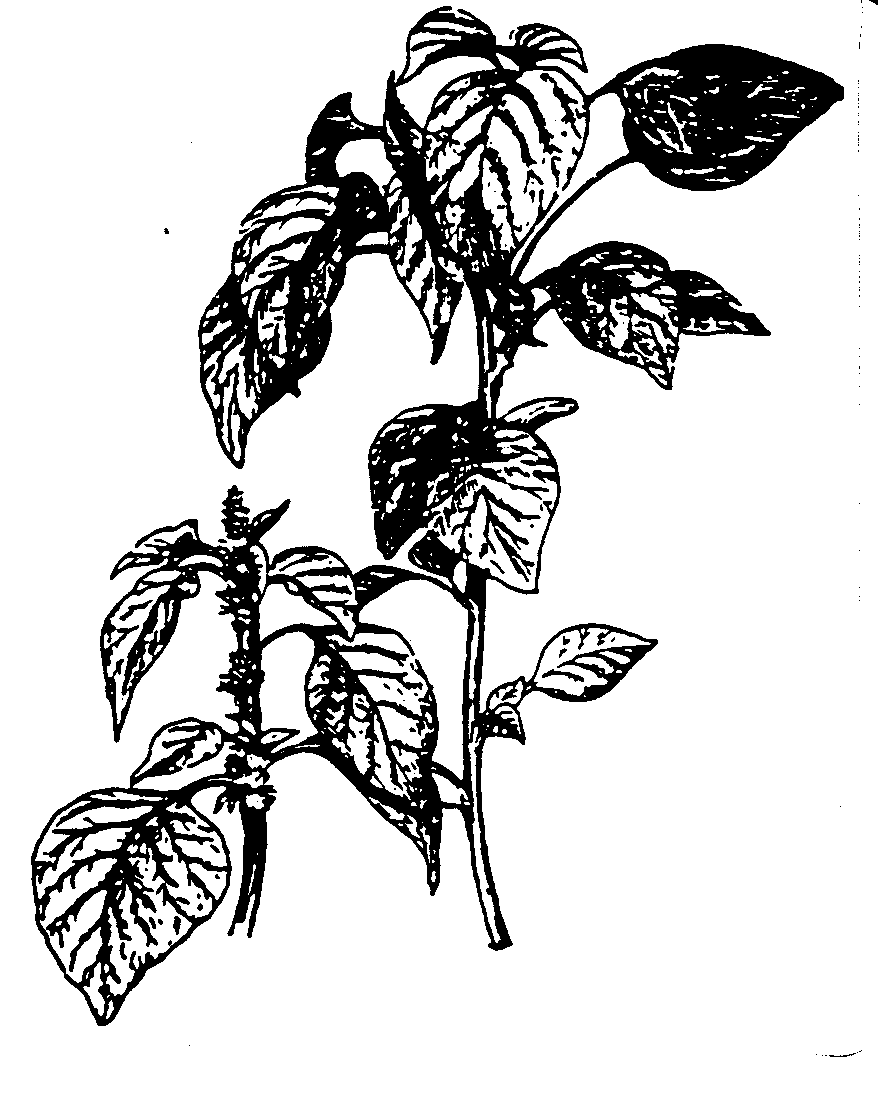
Planting Time: Any month
Soil Condition: Any soil containing some compost or cow dung.
Spacing: 3" - 4" between plants
Depth to Plant Seed: 1/4 inch
Days to Germination: 4 - 6
Planting Instructions: Broadcast the seed over well-prepared beds. Cover lightly with soil, then water the bed.
Care: Keep the soil moist until the seeds have germinated. Begin thinning when the plants are 2 to 3 inches tall. Keep the beds weeded. Give manure tea to promote leaf growth.
Harvesting: Pick the leaves often to prolong the harvest period. The leaves are an excellent source of vitamins and minerals. Seed collection is easy.
ASH GOURD <see picture 2>
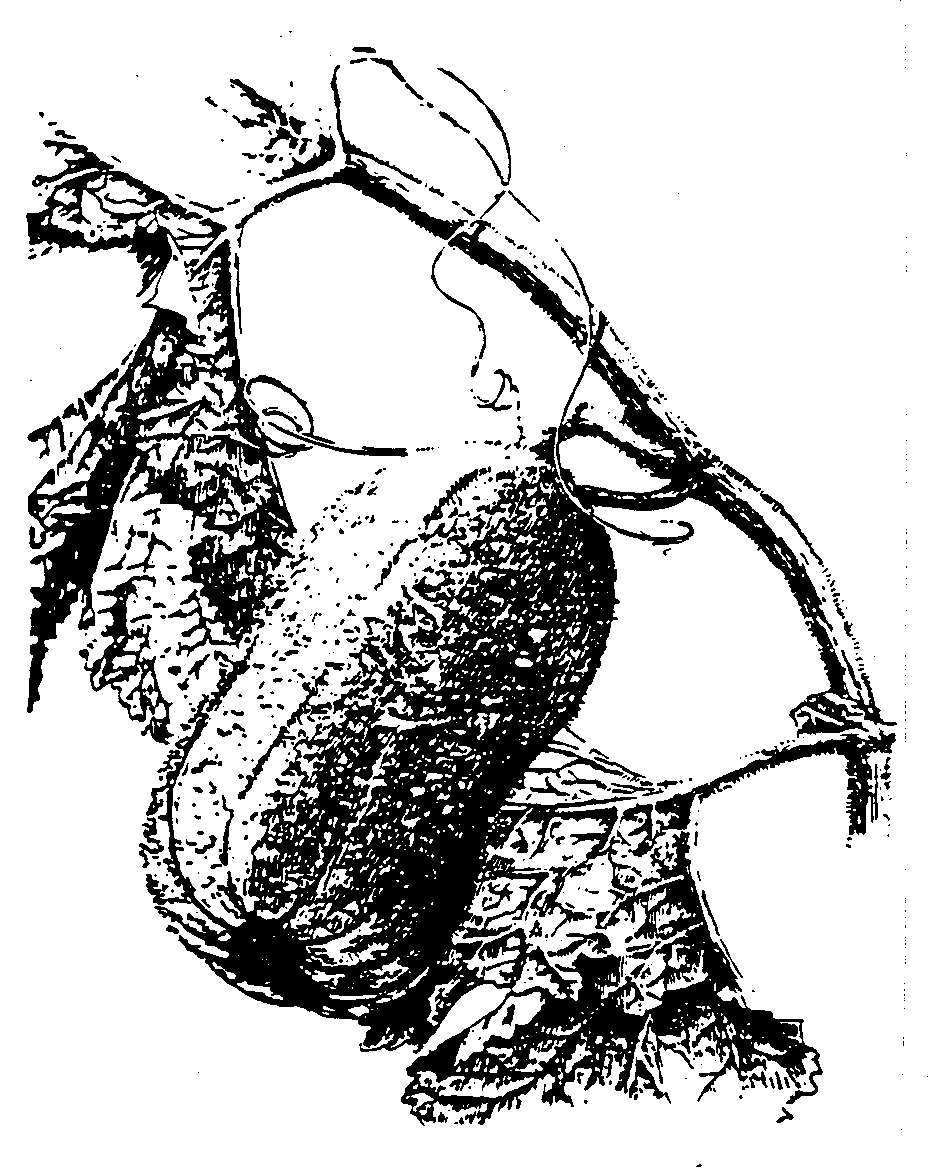
Planting Time: March, April, May
Soil Condition: Any soil containing generous amounts of organic material (cow dung, compost, etc.)
Spacing: 2 - 3 seedlings per mound 12" between mounds
Depth to Plant Seed: 1/2" - 1"
Days to Germination: 6 - 12
Planting Instructions: Plant five to six seeds on a mound. When the seedlings are up, remove all but the best two or three plants.
Care: This vegetable is an active climber, so it is best to let it grow over a tree or the roof of a house. Otherwise, it should be tied to some branches or grown on a trellis.
Harvesting: The first fruits will be ready for eating after about 3 months. The green leaves and stem tips make a tasty vegetable, rich in vitamins and minerals. Seed collection is easy.
BEET <see picture 3>
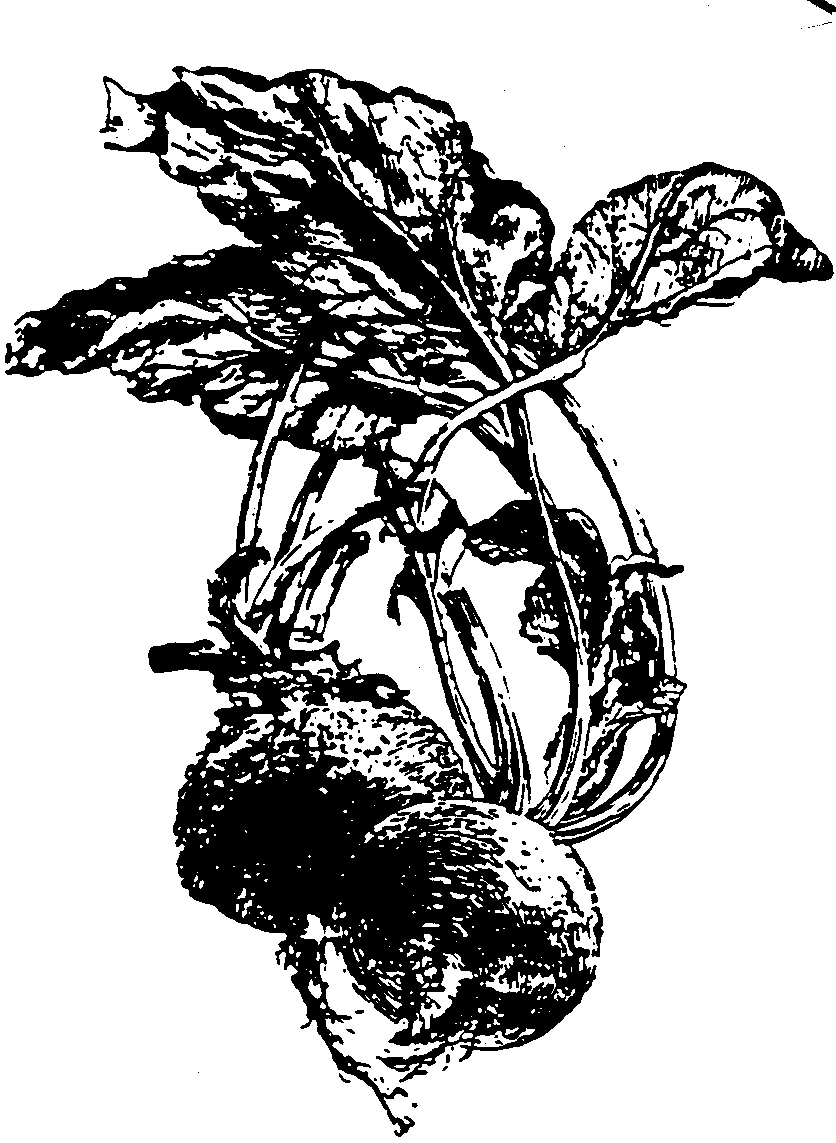
Planting Time: October to December
Soil Condition: Loose, sandy soil containing some organic material (Rotted manure, compost, etc.)
Spacing: 8" - 12" between rows 4" - 5" between plants
Depth to Plant Seed: 1/2 inch
Days to Germination: 5 - 7
Planting Instructions: The Seed can be planted in rows or broadcasted over the top of the bed.
Care: If the seed is broadcasted, the seedlings should be thinned out until the plants are 4 to 5 inches apart. Keep the beds moist.
Harvesting: Beet leaves are rich in vitamins and minerals and quite tasty. The root is ready to eat 2 to 3 months after planting.
BITTER GOURD (KAROLLA) <see picture 4>
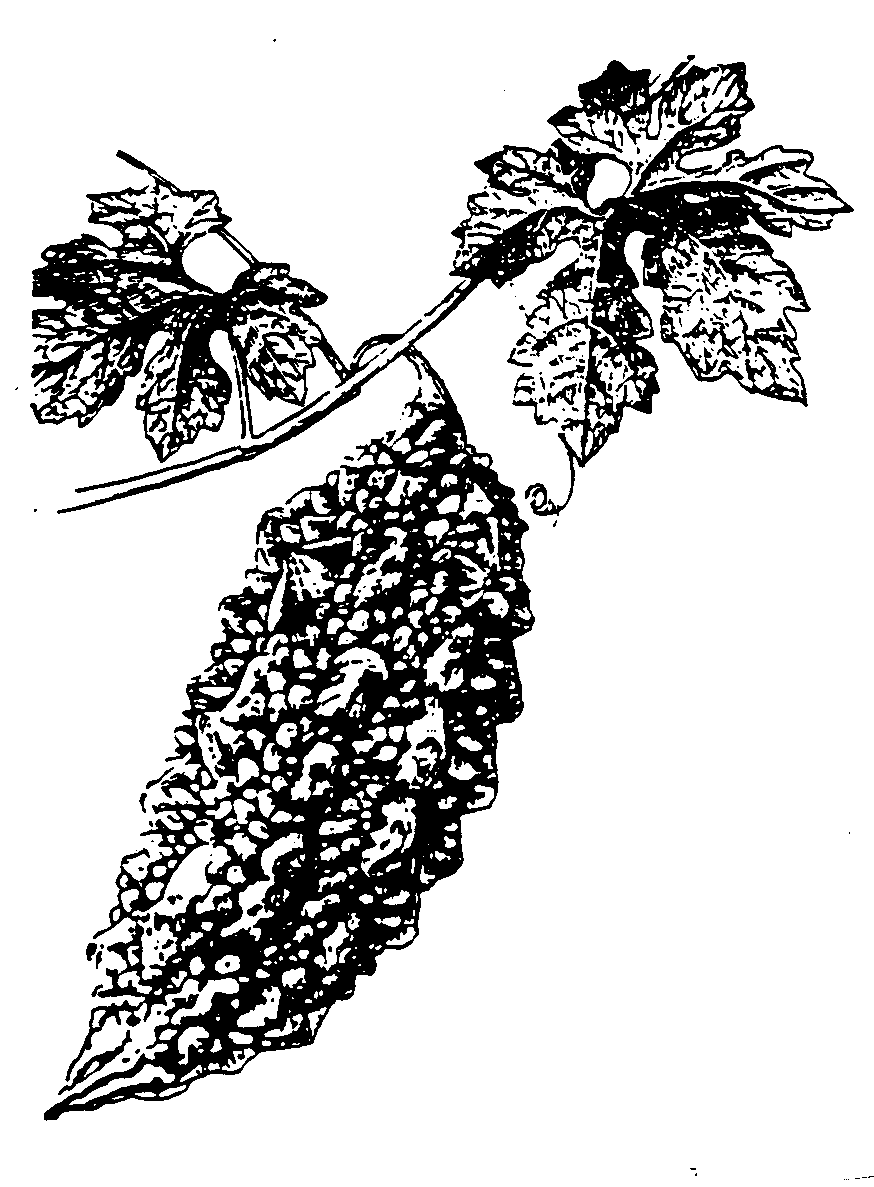
Planting Time: February, March, April
Soil Condition: Any soil containing a generous amount of organic material, (cow dung, compost, etc.)
Spacing: 2 seedlings per mount 3 feet between mounds
Depth to Plant Seed: 1/4" - 1"
Days to Germination: 8 - 12
Planting Instructions: Plant three or four seeds on a mound. Later remove all but the two strongest looking plants.
Care: A bamboo trellis can be built for the vines to climb. This is a good vegetable to plant near the edge of the garden, where the vines can grow over the fence.
Harvesting: The gourds are ready for harvesting 3 months after planting. The green leaves and stem tips make a tasty vegetable, rich in vitamins and minerals. Seed collection is easy.
BLACK COLOCASIA (KRISNO KOCHU) <see picture 5>
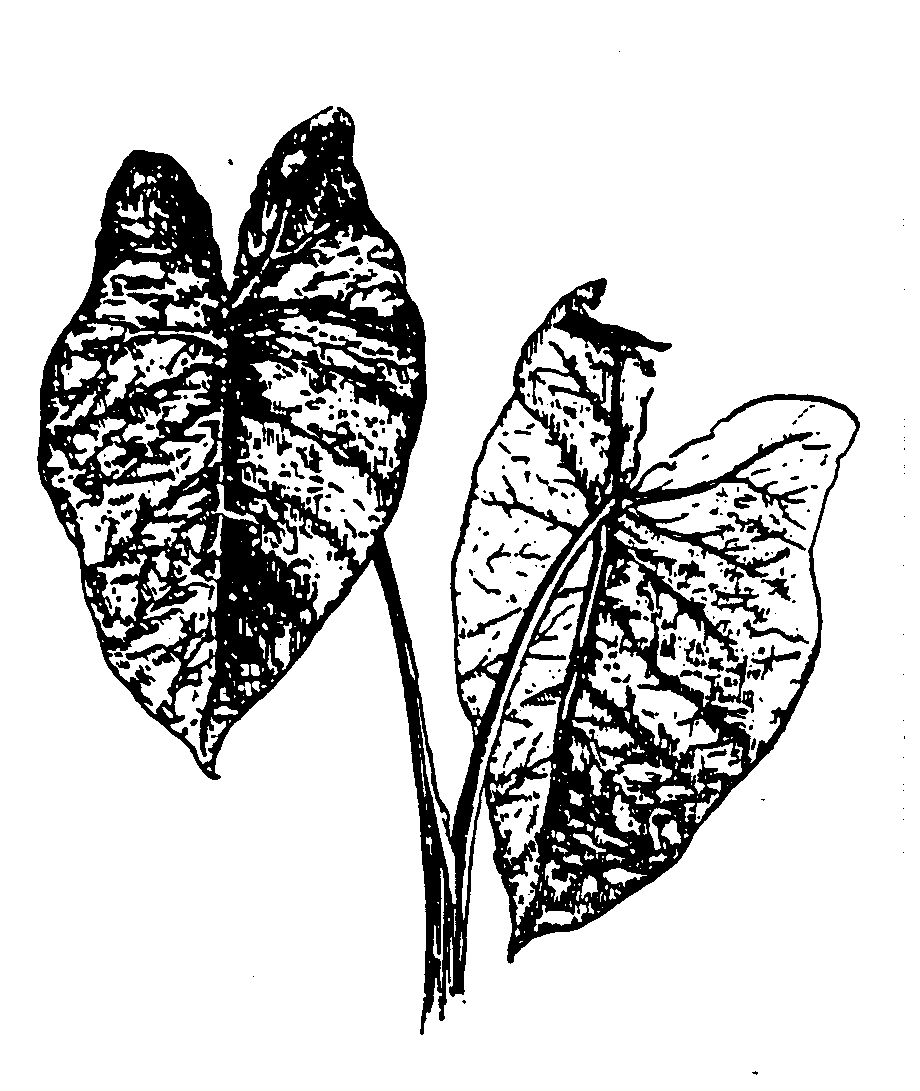
Planting Time: April and May
Soil Condition: Sandy soil rich in organic materials (compost, well-rotted manure, etc.)
Spacing: 1 plant per mount 1 - 2 feet between mounds
Depth to Plant Root: 2 - 3 inches
Days to Sprouting: 5 - 7
Planting Instructions: Plant a piece of root (root-cutting) in each mound. Sometimes young plants with tiny roots are planted.
Care: Keep the soil moist, but not too wet. Good drainage is important. Place earth near the base of the stems four to five times a year. Remove any rotten stems.
Harvesting: Harvest both the leaves and the stems. The leaves are an excellent source of vitamins and minerals. Plants will continue to produce year after year.
BROCCOLI <see picture 6>
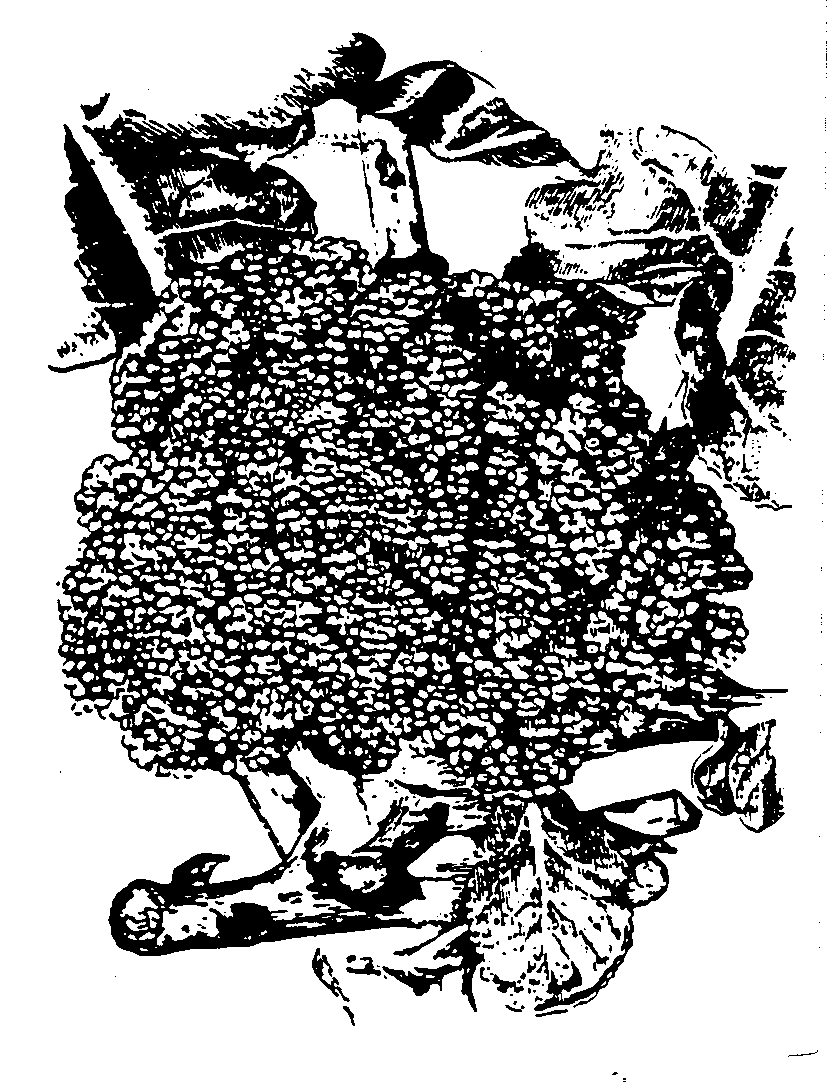
Planting Time: August to November
Soil Condition: Sandy soil containing generous amounts of organic material (cow dung, compost, etc.)
Spacing: 24" between rows 18" between plants
Depth to Plant Seed: 1/4 inch
Days to Germination: 3 - 4
Planting Instructions: Plant seed in a seedbox or seedbed. Transplant when the seedings are 2 inches tall, about 4 to 5 weeks after sowing.
Care: Some gardeners shade the seedlings for the first 3 to 4 days after transplanting. Beds can be mulched to keep the soil moist and control the growth of weeds. Give liquid fertilizer (manure tea) several times during the growing season.
Harvesting: Cut the first head before the tiny yellow flowers begin to open. More heads will be Produced. The more heads that are picked, the more the plant will produce.
CABBAGE <see picture 7>
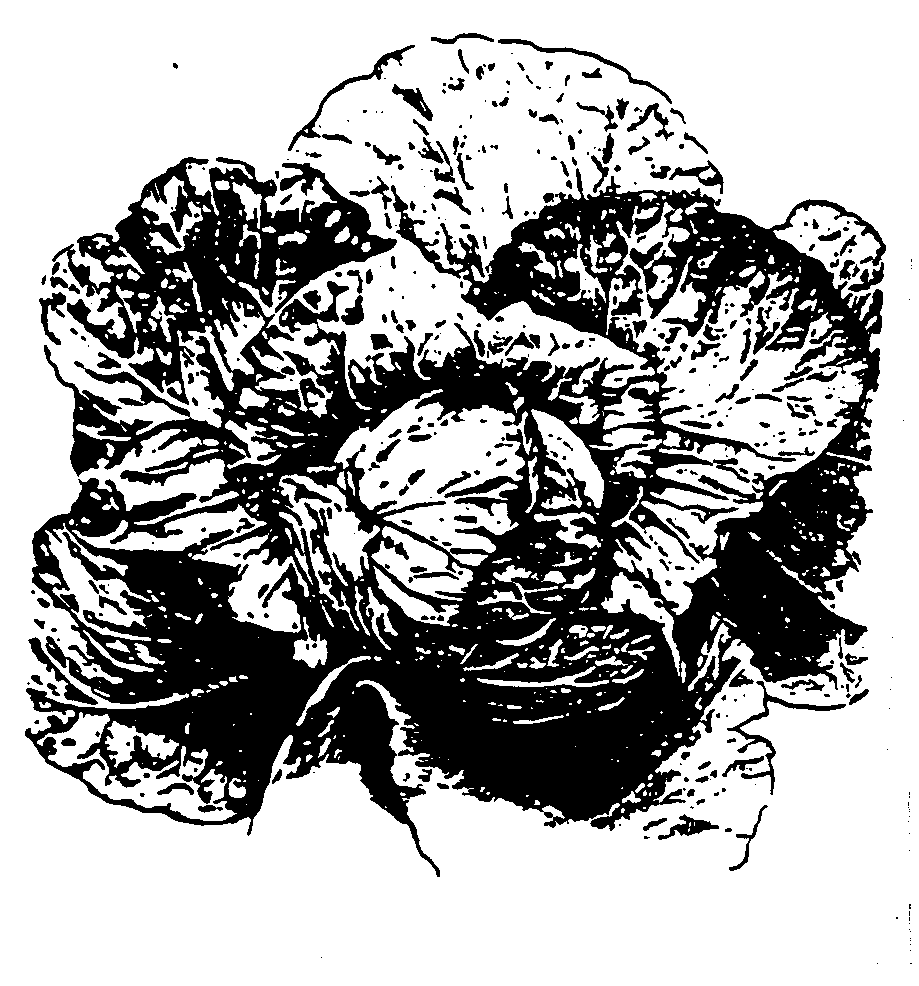
Planting Time: August through October
Soil Condition: Any soil containing generous amounts of organic material (cowdung, compost, etc.)
Spacing: 24" between rows 18" between plants
Depth to Plant Seed: 1/4 inch
Days to Germination: 4 - 9
Planting Instructions: Plant seed in a seedbox or seedbed. Transplant the seedlings about 15 to 20 days after sowing.
Care: Many gardeners shade their seedlings for the first 3 to 4 days after transplanting. Beds can be mulched to conserve water.
Harvesting: The heads are ready to eat 3 months after planting. Early picking of the outer leaves will prolong the harvest period.
CARROT <see picture 8>
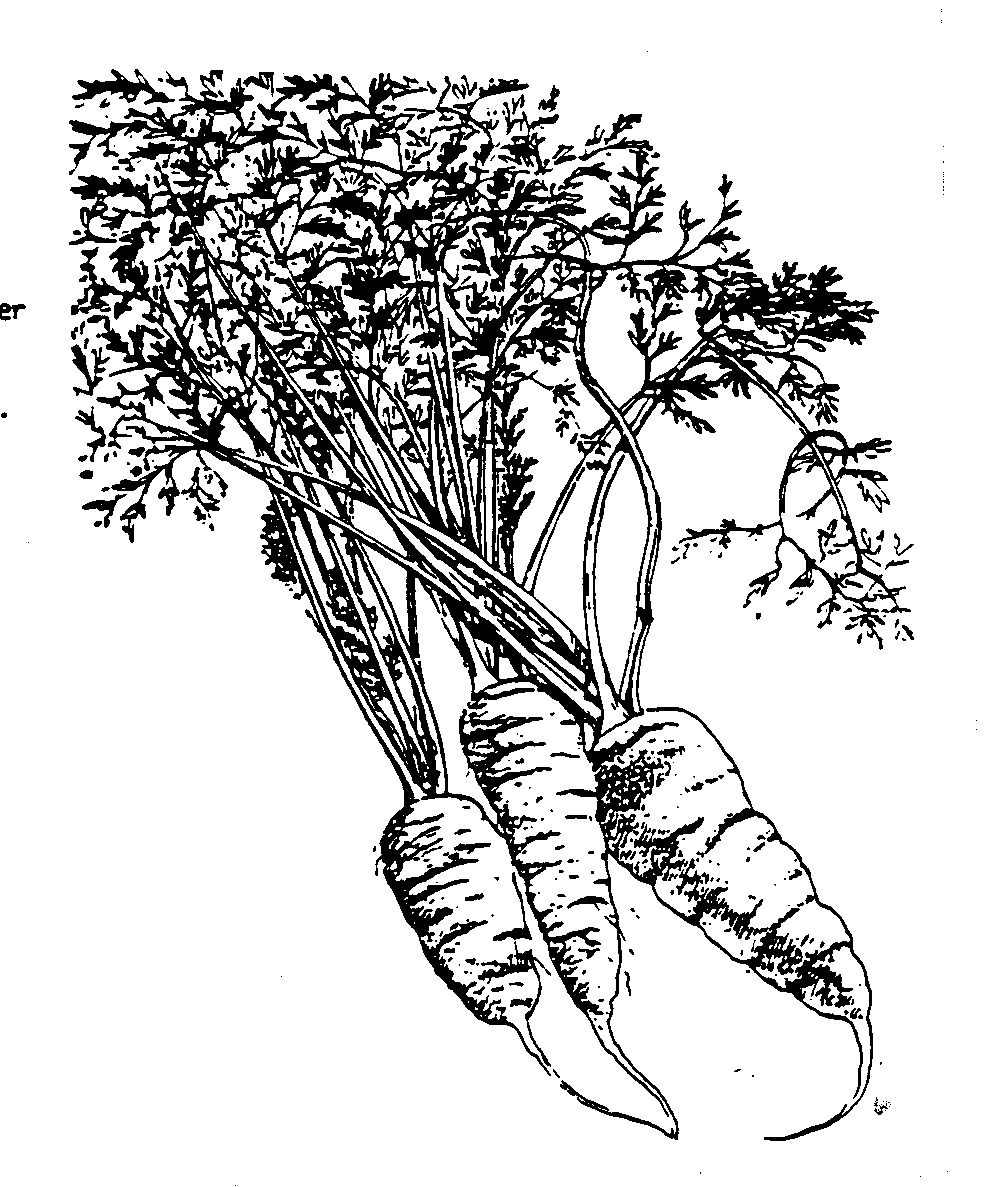
Planting Time: September to December
Soil Condition: A loose sandy soil. Avoid too much cow dung and other manures. Compost can be used.
Spacing: 6" - 8" between rows 2" - 3" between plants
Depth to Plant Seed: 1/4" - 1/2"
Days to Germination: 7 - 12
Planting Instructions: Seeds can be sown in rows or broadcasted over the bed. Seeds can be soaked in water for 12 hours to speed germination.
Care: Thinning should be done 7 - 10 days after germination. A second thinning can be done when the leaves are about 4 inches tall. Too much cow dung causes carrots to grow deformed roots.
Harvesting: The young carrots can be harvested 2 months after planting. Bigger roots are ready to eat in 3 months.
CAULIFLOWER <see picture 9>
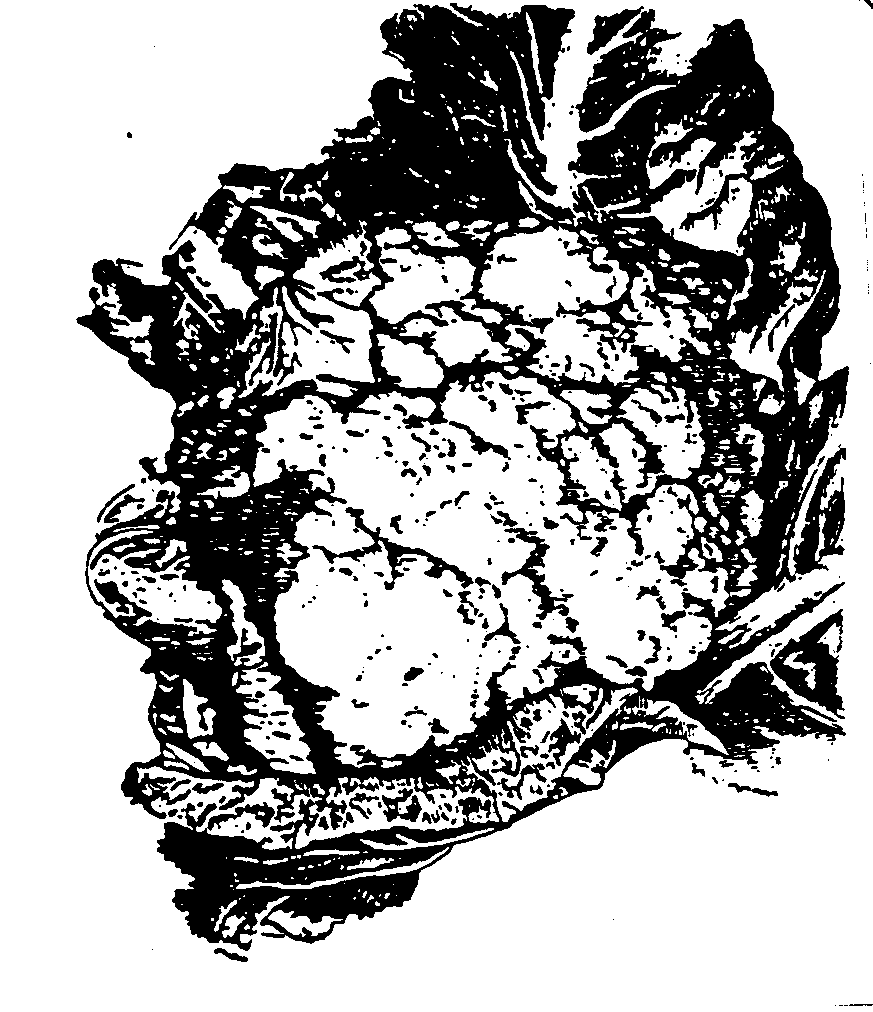
Planting Time: August to November
Soil Condition: Any soil containing generous amounts or organic material (compost, manure, etc.)
Spacing: 24" between rows 18" between plants
Depth to Plant Seed: 1/4" to 1/2"
Days to Germination: 3 - 6
Planting Instructions: Plant seed in a seedbox or seedbed. Transplant the seedlings to permanent beds after 15 days.
Care: When seedlings are set out, press the soil tightly around the roots. Some gardeners shade the seedlings for the first 3 to 4 days after transplanting. Beds can be mulched to keep the soil moist and control the growth of weeds.
Harvesting: Ready to eat 3 to 4 months after planting. The outer green leaves make a tasty vegetable.
CHINESE CABBAGE (PE-TSAI) <see picture 10>
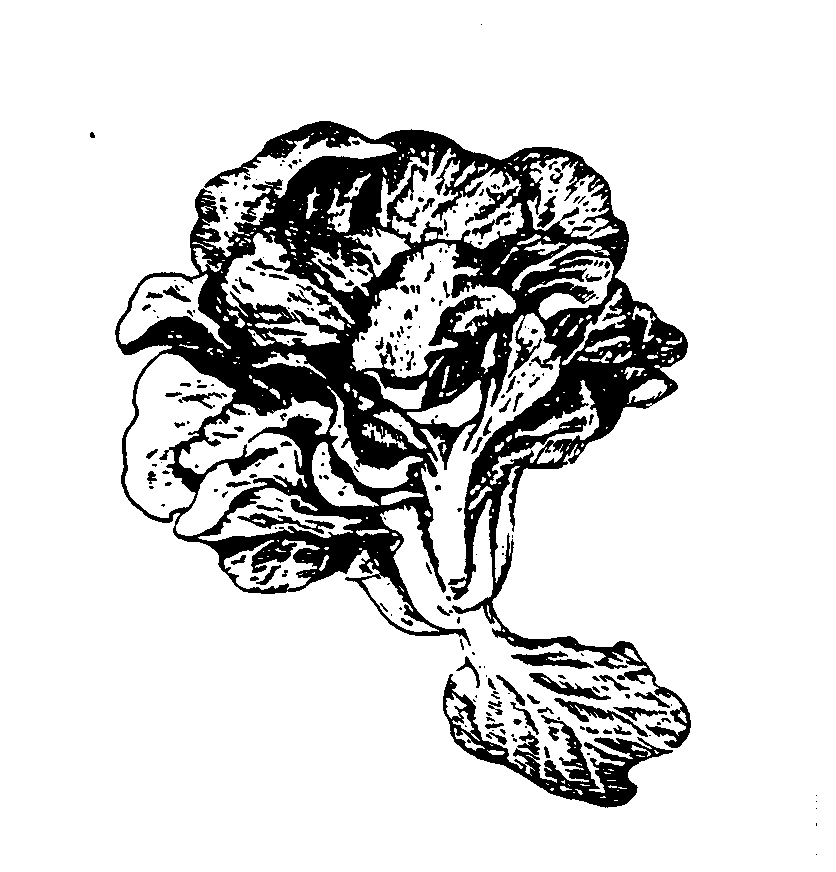
Planting Time: October-January
Soil Condition: Mix plenty of organic material into the beds.
Spacing: 16" - 18" between rows 12" between plants
Depth to Plant Seed: 1/2 inch
Days to Germination: 3 - 5
Planting Instructions: Plant seeds in a seedbox or seedbed. Transplant when seedlings are 15 to 20 days old. Grow on raised beds.
Care: Lots of moisture in the soil is needed for growth. Many gardeners mulch the beds. Give liquid fertilizer (manure tea) several times during the growing season.
Harvesting: The vegetable is ready within two months after sowing. Cut and eat the outer leaves to prolong the harvest. Seed collection is easy.
COWPEA <see picture 11>
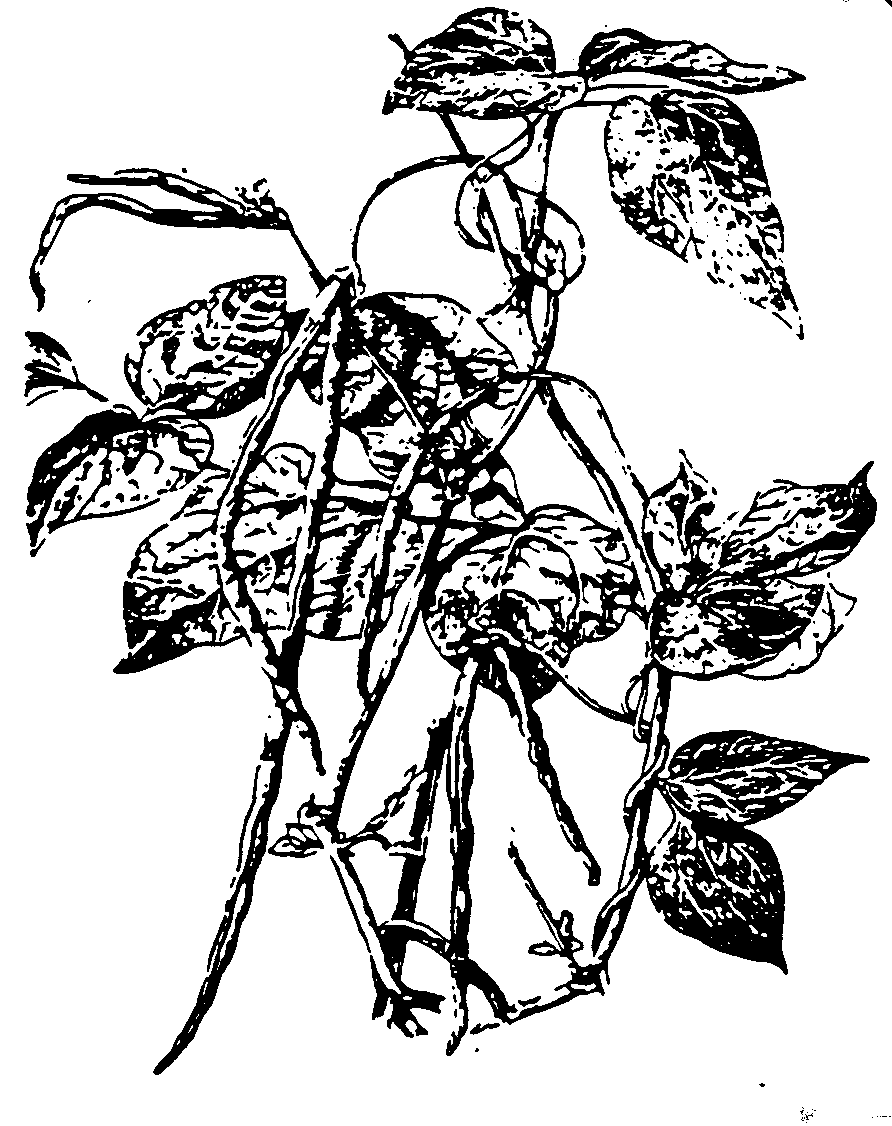
Planting Time: March to July
Soil Condition: Any soil containing generous amounts of organic material (compost, manure, etc.)
Spacing: 2-3 plants per mound 2 feet between mounds
Depth to Plant Seed: 1/2" - 1"
Days to Germination: 4 - 5
Planting Instructions: Plant four to five seeds on a mound. Later, remove all but the srongest two or three plants. Seeds can also be planted in rows (6 inches between plants, 2 - 3 feet between rows) or broadcasted over the top of the bed.
Care: Provide a large branch or trellis for the plants to climb. Watch for small insects on the tender beans. Dust with ashes, if necessary.
Harvesting: The young beans are ready to eat five to eight weeks after planting. The green leaves and tender stem tips make a good vegetable, rich in vitamins and minerals. Seed collection is easy.
CUCUMBER <see picture 12>
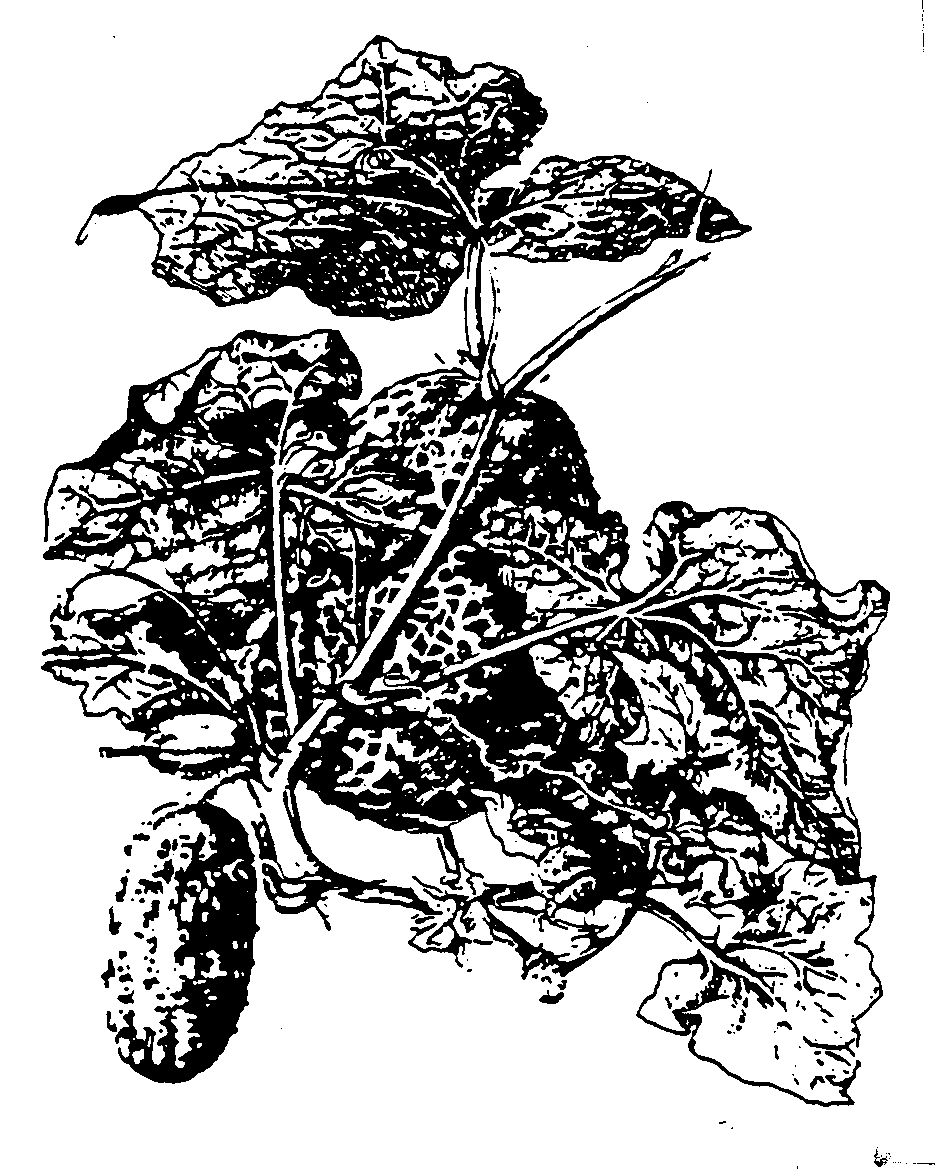
Planting Time: April - May October - November
Soil Condition: Soil containing a generous amount of organic material (cow dung, compost, etc.)
Spacing: 2 - 3 plants per mound 2 - 3 feet between mounds
Depth to Plant Seed: 1/2" - 1"
Days to Germination: 4 - 8
Planting Instructions: Plant five to six seeds on a mound. When the seedlings are up, remove all out the best two to three plants.
Care: During the winter season, cucumber can be grown over mulched mounds or beds. In the monsoon, tie the vines to a branch or trellis to keep the plants off the ground.
Harvesting: Harvest the fruits when 4 to 6 inches long, about 3 months after planting. Pick the fruits often to prolong the harvest. Seed collection is easy.
EGGPLANT <see picture 13>
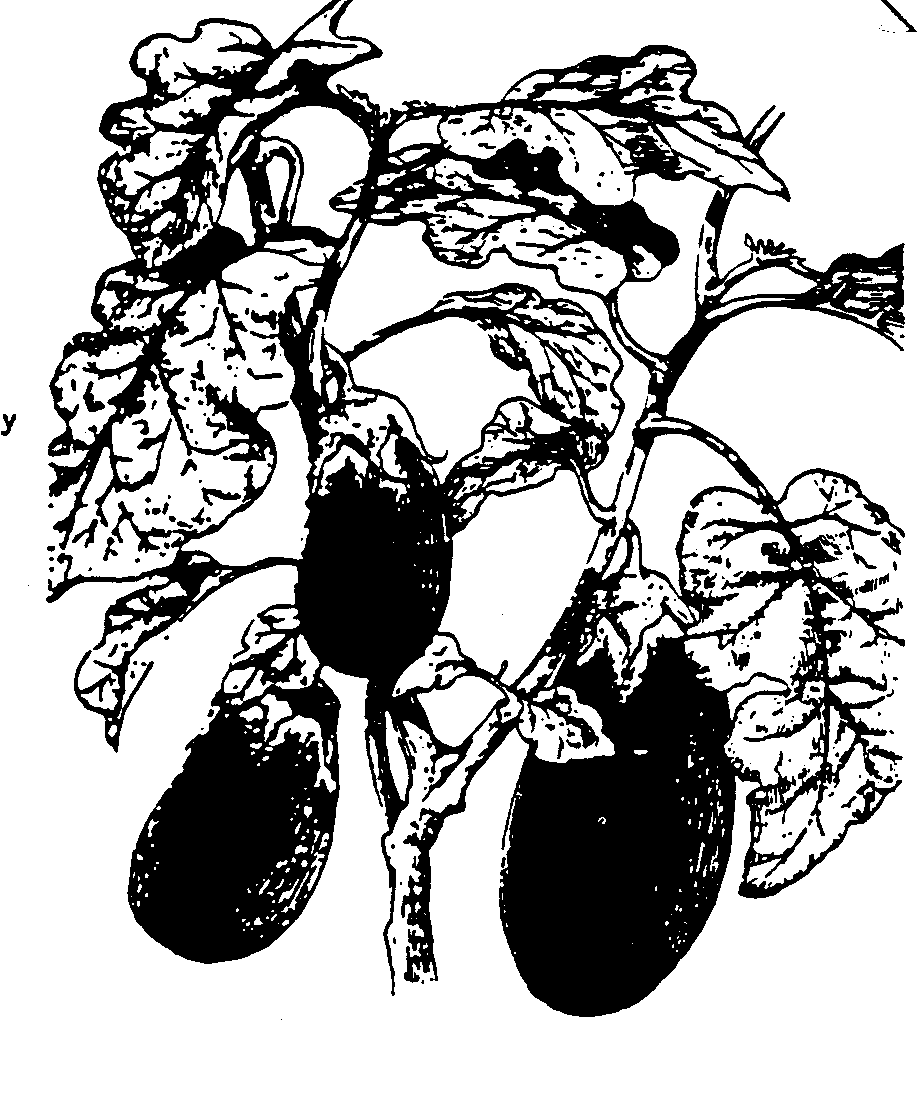
Planting Time: February, March, September and October
Soil Condition: Grows well on sandy soil containing organic material.
Spacing: 24" - 36" between rows 18" - 24" between plants
Depth to Plant Seed: 1/2 inch
Days to Germination: 6 - 14
Planting Instructions: Plant seeds in a seedbox or seedbed. Transplant when the seedlings are 4" to 5" high, about 15 days after sowing. Plants can be grown on beds or mounds.
Care: When the plants are one foot tall. they should be supported with a stick. Water every seven to ten days and give liquid fertilizer (manure tea) once or twice before the plant flowers.
Harvesting: The young fruits will be ready to eat about 10 weeks after sowing. Pick the fruits often to prolong the harvest. Seed collection is easy.
FIELD BEAN (SHEEM) <see picture 14>

Planting Time: July, August, September
Soil Condition: Any soil containing generous amounts of organic material (compost, manure, rotted leaves)
Spacing: 1 - 2 plants per mound 4 - 6 feet between mounds
Depth to Plant Seed: 1/2" - 1"
Days to Germination: 3 - 5
Planting Instructions: Plant four to five seeds on a mound. Later, remove all but one or two seedlings.
Care: Many gardeners mulch the mounds after the seedlings have germinated. Watch for insect damage on the flowers and tender beans. Dust with ashes, if necessary. Provide a large branch or trellis for plants to climb.
Harvesting: Beans are ready to eat about 10 weeks after planting. Pick the beans often to prolong the harvest. Seed collection is easy.
FRENCH BEAN <see picture 15>
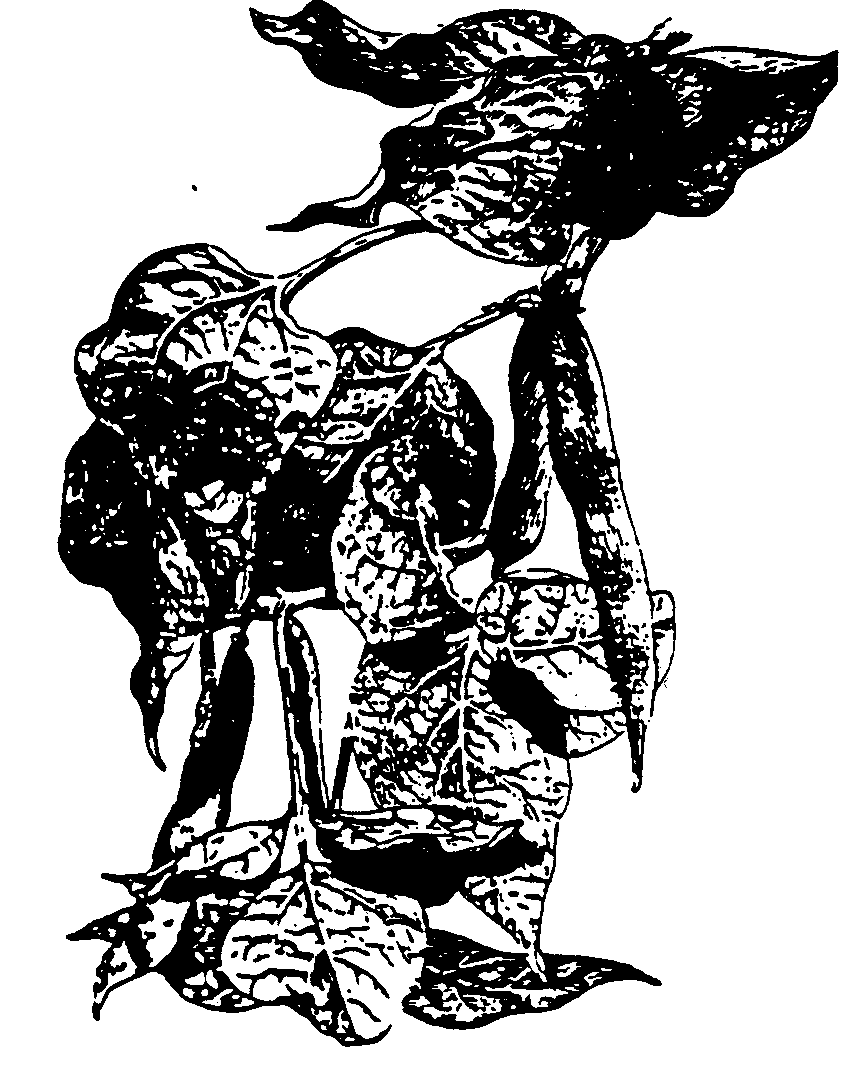
Planting Time: September to December
Soil Condition: Mix plenty of organic material into the soil (compost, manure, etc.). Bed should be well drained.
Spacing: 10" - 18" between rows 6" - 8" between plants
Depth to Plant Seed: 1 inch
Days to Germination: 3 - 5
Planting Instructions: Seeds may be planted in rows or broadcasted.
Care: Beans do not like soil that is too wet. Many gardeners mulch the beds to conserve soil moisture and control the growth of weeds. Watch for insect damage on the flowers and tender beans. Dust with ashes, if necessary.
Harvesting: Beans are ready to eat about 10 weeks after planting. Frequent picking will prolong the harvest. Seed collection is easy.
GARLIC AND ONION <see picture 16>
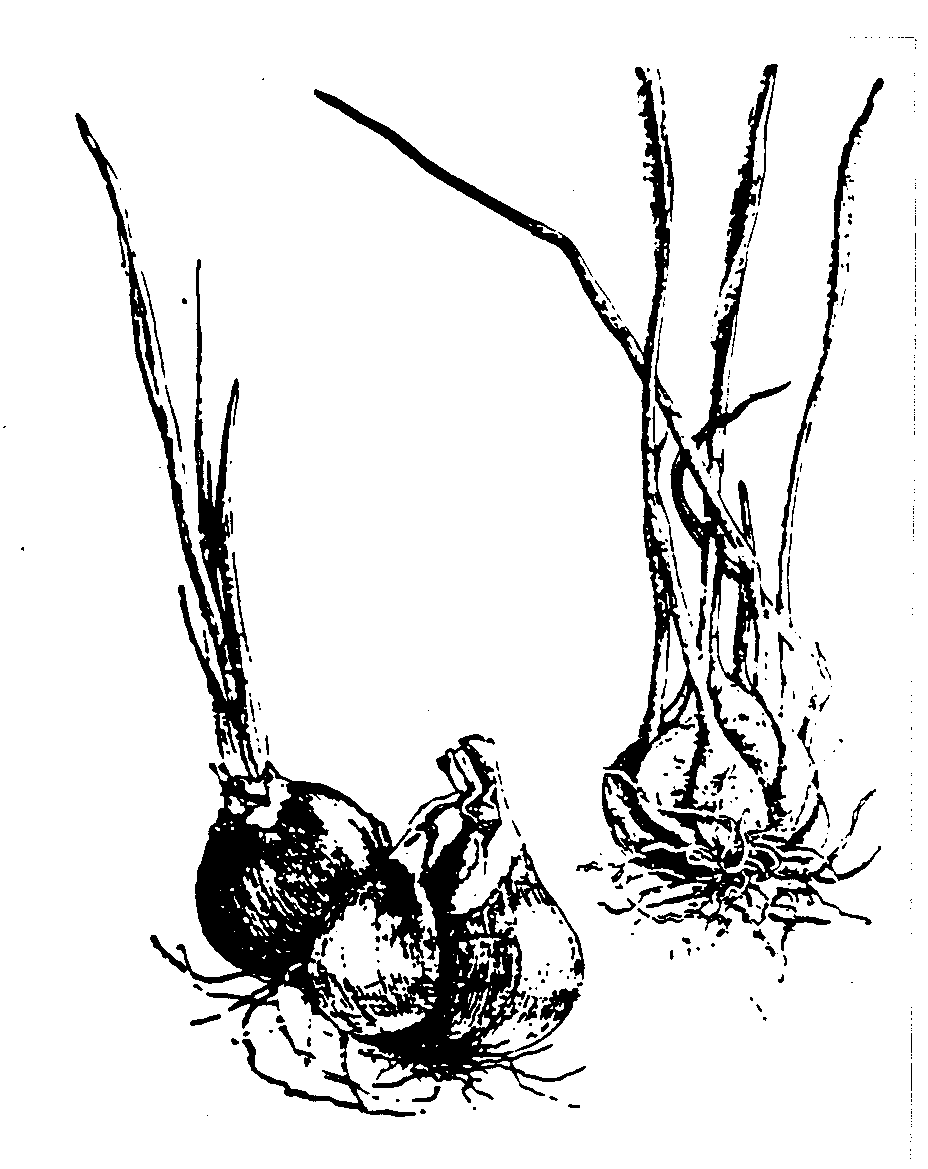
Planting Time: October - November
Soil Condition: Well-drained, sandy soil, containing organic material
Spacing: 7" - 12" between rows 3" - 4" between plants
Depth to Plant Seed: 1/4 inch
Days to Germination: 5 - 12
Planting Instructions: It takes too long to grow garlic from seeds. Break apart an old garlic into cloves (small bulbs). Plant each clove 1-1/2 inches deep in the garden bed. Soak onion seeds in water for 12 hours. Plant the seed in a seedbox or seedbed. When the seedlings are 3 to 4 inches tall, transplant to the garden beds.
Care: Keep the bed free of weeds. Some gardeners loosen the soil once or twice a week.
Harvesting: When the leaves turn brown (3 - 4 months), carefully dig up the bulbs and dry them in the sun for a few days. Store them in a cool, dry place. INDIAN SPINACH <see picture 17>
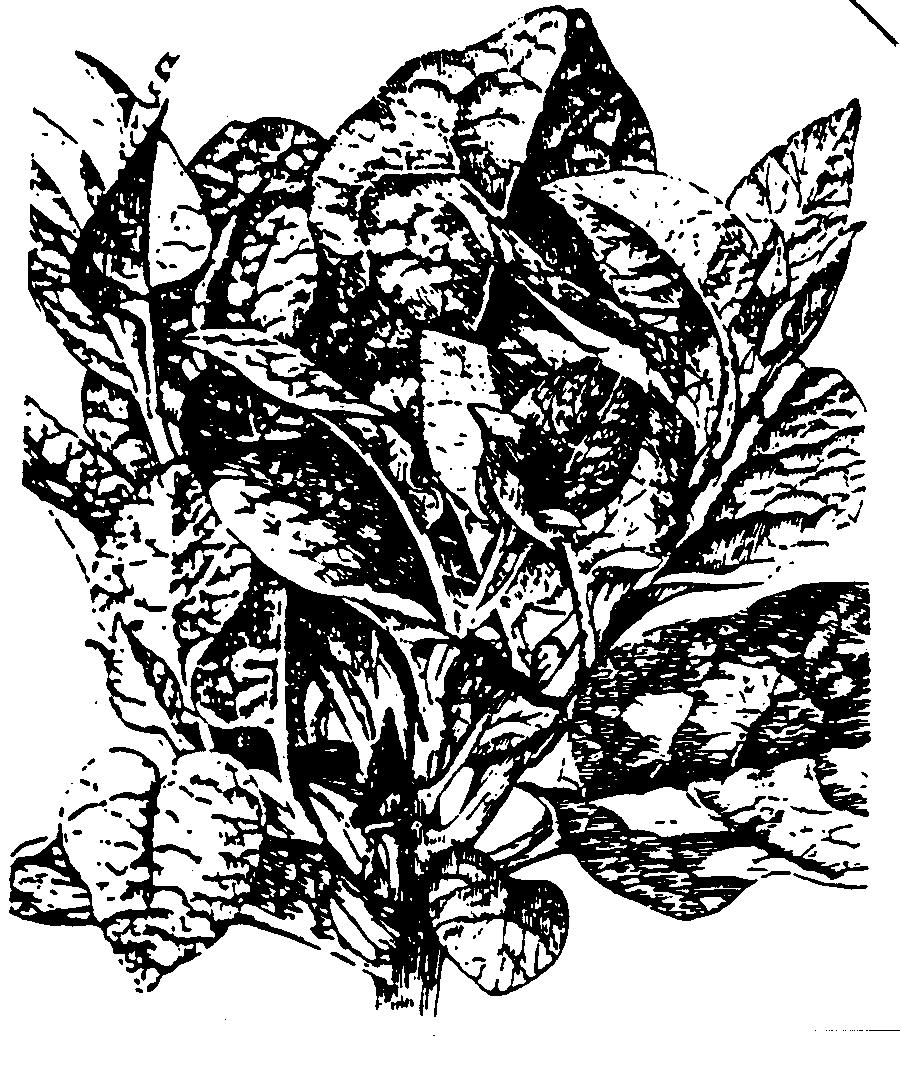
Planting Time: Any month Best Time: February to June
Soil Condition: Any soil containing generous amounts of organic material (well-rotted cow dung, compost, etc.).
Spacing: 2 feet row to row 8" - 10" between plants
Depth to Plant Seed: 1/2 inch
Days to Germination: 4 - 6
Planting Instructions: Plant seeds in a seedbox or seedbed. Transplant when the seedlings are 4 inches tall. Seedlings can be grown on mounds or beds. Plant three seedlings per mound.
Care: Keep the soil moist. Tie the plant to a stick. Give manure tea every week to stimulate leaf growth.
Harvesting: Begin harvesting when the vine is three feet long. The more the vine is cut, the more branches it will grow. Seed collection is easy.
JUTE (SWEET) <see picture 18>
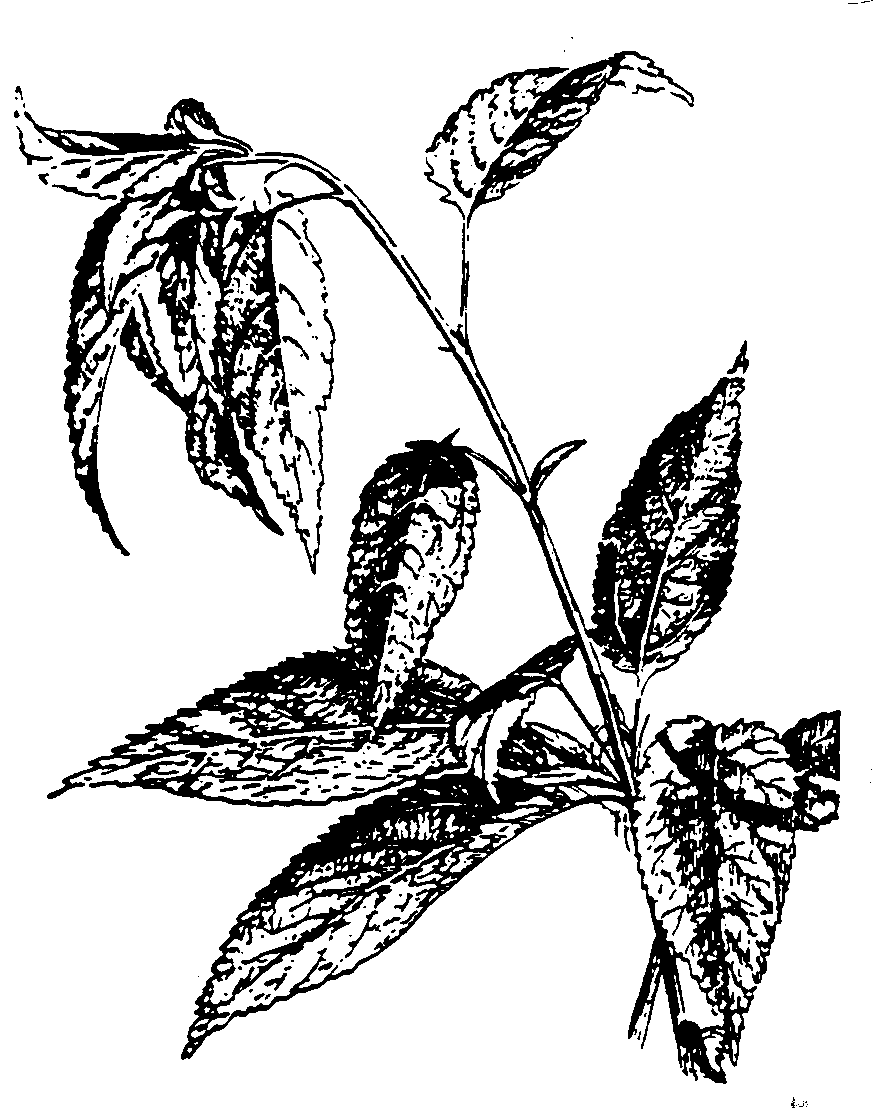
Planting Time: March to May
Soil Condition: Any soil containing some organic materials (compost, well-rotted cow dung, etc.)
Spacing: 3" - 4" between each plant
Depth to Plant Seed: 1/4 inch
Days to Germination: 4 - 6
Planting Instructions: Broadcast the seeds over well-prepared beds. Cover lightly with soil, then water the bed.
Care: Keen the soil moist until the seeds have germinated. Begin thinning when the plants are 3 inches tall. Keep the beds weeded. Give manure tea to promote leaf growth.
Harvesting: Start picking the leaves 1 month after planting. Stems can be harvested for fiber after 5 months. The leaves are a good source of vitamins and minerals. Seed collection is easy.
KAKROL <see picture 19>

Planting Time: March to August
Soil Condition: Any soil well prepared with cow dung or compost
Spacing: 1 plant per mound 3 - 5 feet between mounds
Depth to Plant Root: 3 inches
Days to Sprouting: 3 - 4
Planting Instructions: Plant one root cutting per mound. Select pieces of root from healthy, productive vines. Plants will continue to produce year after year.
Care: Put a large bamboo branch into the ground for the vines to climb. Mulching around the plants holds soil moisture. and keeps weeds from growing. Watch for insect damage. Dust with ashes, if necessary.
Harvesting: The fruits from Kakrol are ready to eat 3 months after planting. Harvest before the seeds become too big.
KOHLRABI <see picture 20>
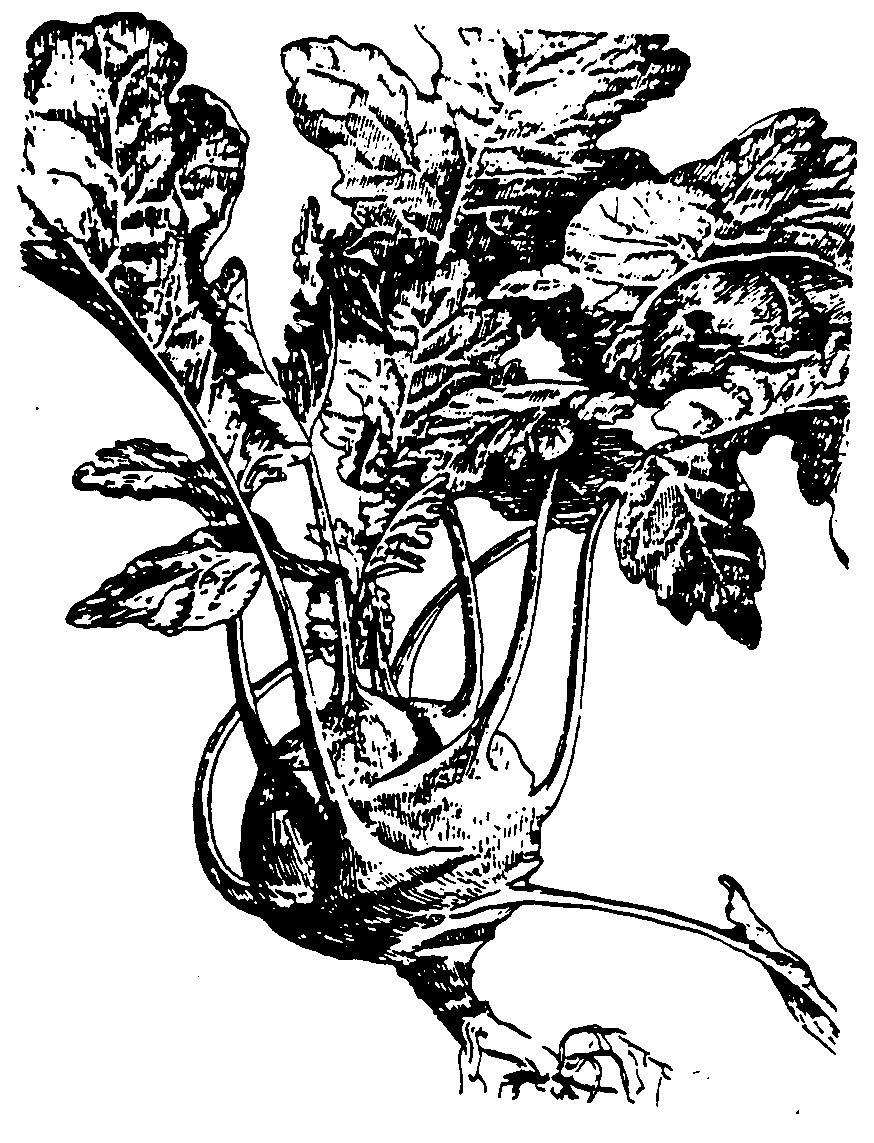
Planting Time: September, October November
Soil Condition: Any soil well prepared with cow dung or compost
Spacing: 10" - 12" between rows 4" - 6" between plants
Depth to Plant Seed: 1/4 inch
Days to Germination: 4 - 6
Planting Instructions: Plant seeds in a seedbox or directly in the garden. Transplant seedlings from the seedbox when the plants are about 2 inches tall.
Care: Mulch the beds to conserve soil moisture and control the growth of weeds.
Harvesting: Once the bottom of the stem has reached two or three inches in diameter, it is ready to harvest (2-3 months).
MUSTARD (LAI SHAK) <see picture 21>
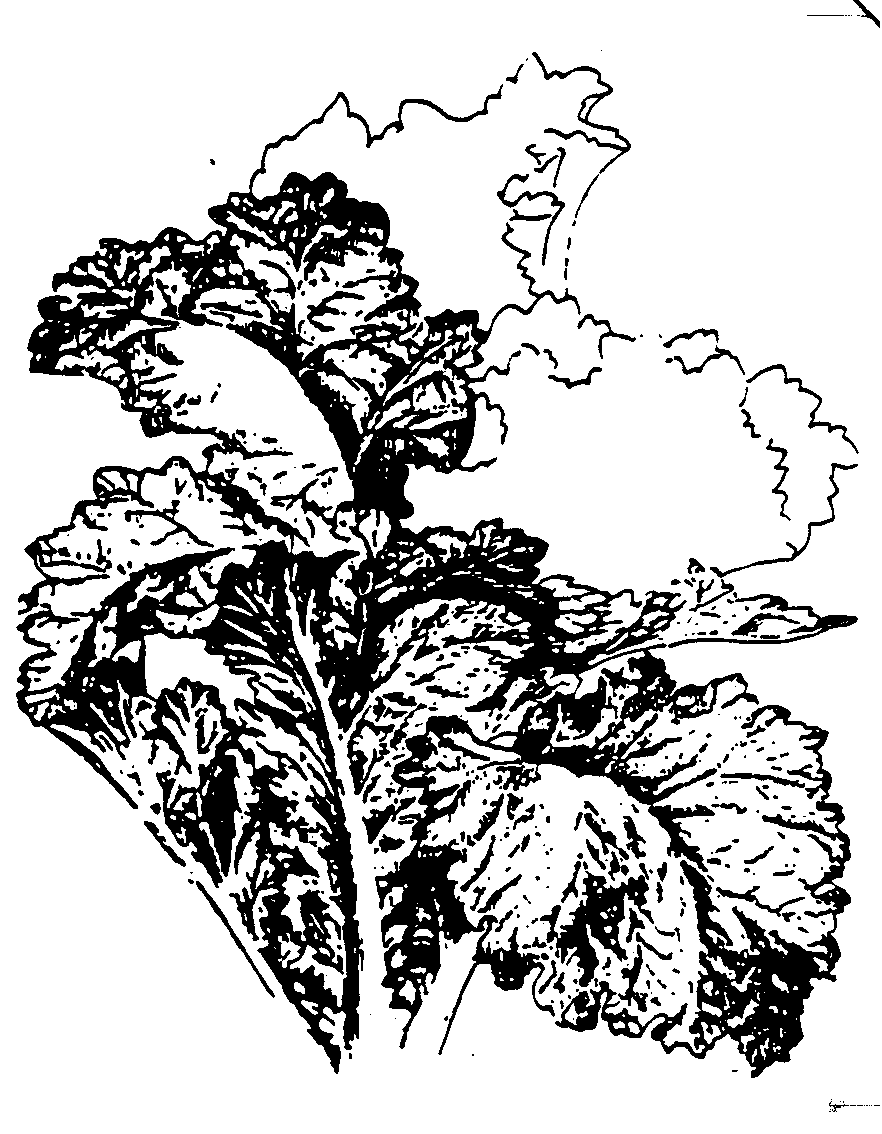
Planting time: September to December
Soil Condition: Any soil rich in organic materials (rotted cow dung, compost, rotted leaves, etc.)
Spacing: 18" - 24" between rows 8" - 12" between plants
Depth to Plant Seed: 1/4" - 1/2"
Days to Germination: 3 - 5
Planting Instructions: Plant the seeds in a seedbox or directly in the garden (in rows, or broadcasted).
Care: If seeds are broadcasted, the seedlings should be thinned out to stand 8 to 12 inches between plants. Mulch the beds to conserve soil moisture and control the browth of weeds. Give liquid fertilizer (manure tea) several times during the growing season. This will encourage more leafy growth.
Harvesting: The vegetable is ready to eat within two months after sowing. Cut and eat the outer leaves often to prolong the harvest. Seed collection is easy.
OKRA <see picture 22>
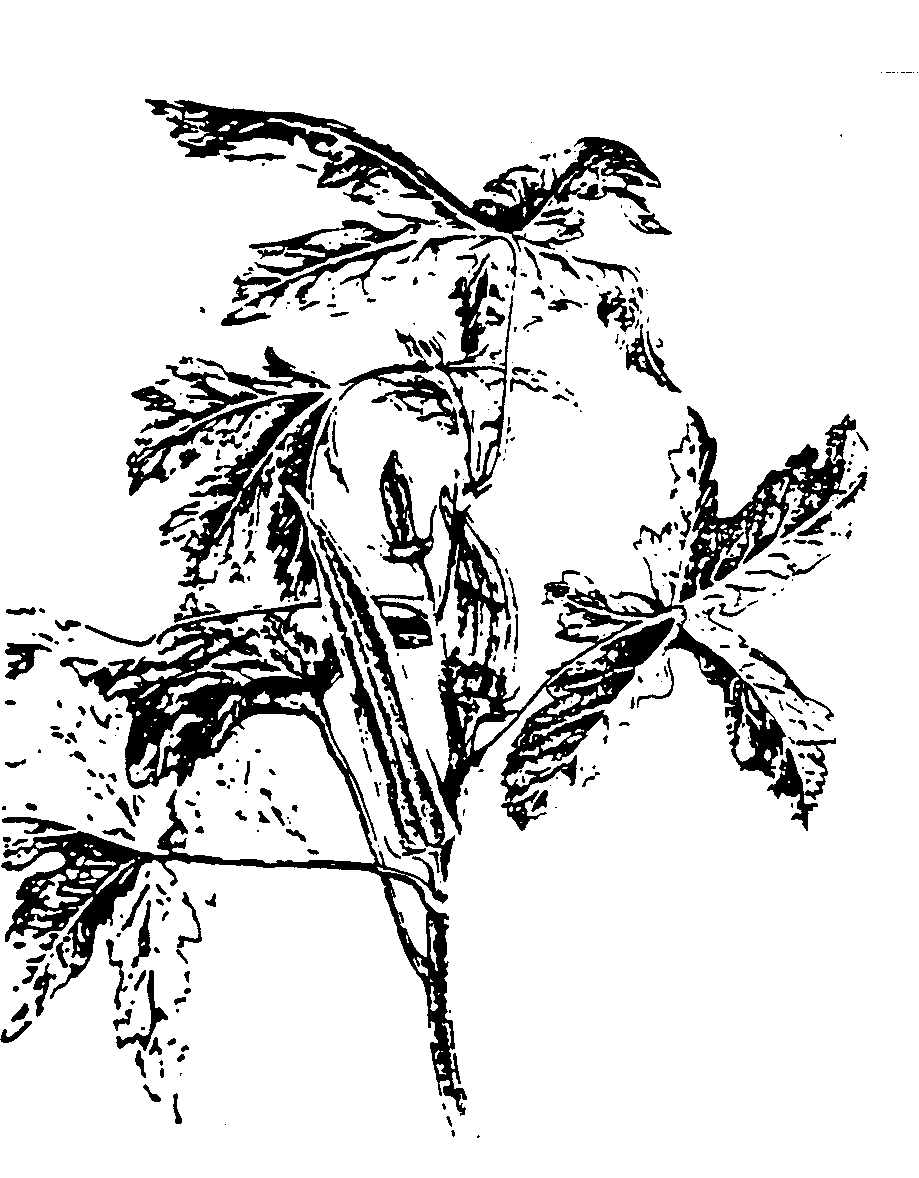
Planting Time: February to May August to October
Soil Condition: Any soil well prepared with cow dung or compost. Some gardeners add lime to the soil two to four weeks before planting.
Spacing: 24" - 30" between rows 18" - 24" between plants
Depth to Plant Seed: 1/2" - 1"
Days to Germination: 5 - 8
Planting Instructions: Seeds may be planted directly in the garden. Keep the soil moist until the seeds germinate.
Care: Mulch the beds to conserve soil moisture and control the growth of weeds.
Harvesting: Pick the fruits before the seeds are too big. Dried okra seeds are good to eat. Prepare them like dry lentils or beans. Seed collection is very easy.
PEA (BUSH TYPE) <see picture 23>
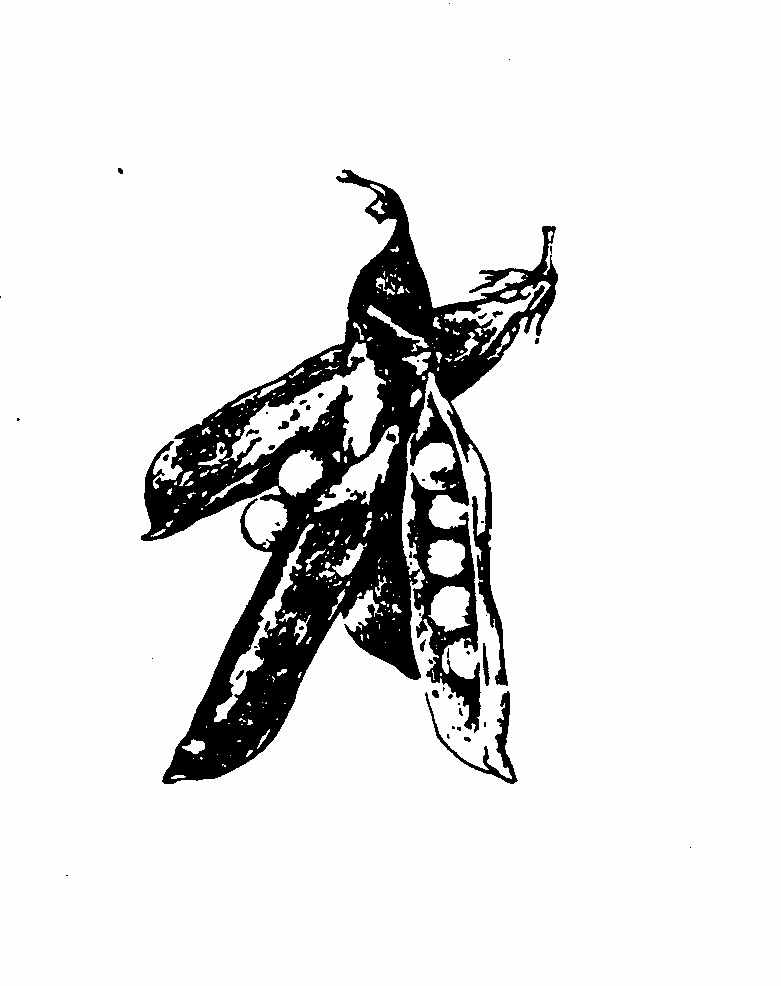
Planting Time: October and November
Soil Condition: Mix plenty of organic material into the beds.
Spacing: 18" - 24" between rows 6" - 8" between plants
Depth to Plant Seed: 1 inch
Days to Germination: 6 - 10
Planting Instructions: Plant seeds directly in prepared beds. Seeds can either be broadcasted or planted in lines (rows).
Care: Lots of moisture in the soil is required for good growth. Many gardeners mulch the beds. Provide short sticks to support the plants if needed. Peas are good to grow along the fences of a garden.
Harvesting: The young pods are ready to harvest about 7 to 8 weeks after sowing. Save seeds when the pods are dry after four months.
PEPPER (HOT) <see picture 24>

Planting Time: March to May October to December
Soil Condition: Any soil containing organic materials (Well-rotted cow dung, compost, rotted leaves, etc.
Spacing: 2 feet between rows 12" - 18" between plants
Depth to Plant Seed: 1/2 inch
Days to Germination: 5 - 10
Planting Instructions: Plant seeds in a seedbox or seedbed. Some gardeners soak the seeds for 12 hours before sowing. Transplant the seedlings to a permanent bed after one month.
Care: Shade the seedlings for the first 3 to 4 days after transplanting. Mulch the beds to conserve soil moisture and control the growth of weeds. Keep the beds moist for the first 15 days after transplanting.
Harvesting: Green peppers are ready 3 to 4 months after planting. Pick the fully ripe peppers for drying. Seed collection is easy.
PIGEON PEA (ORHAR) <see picture 25>
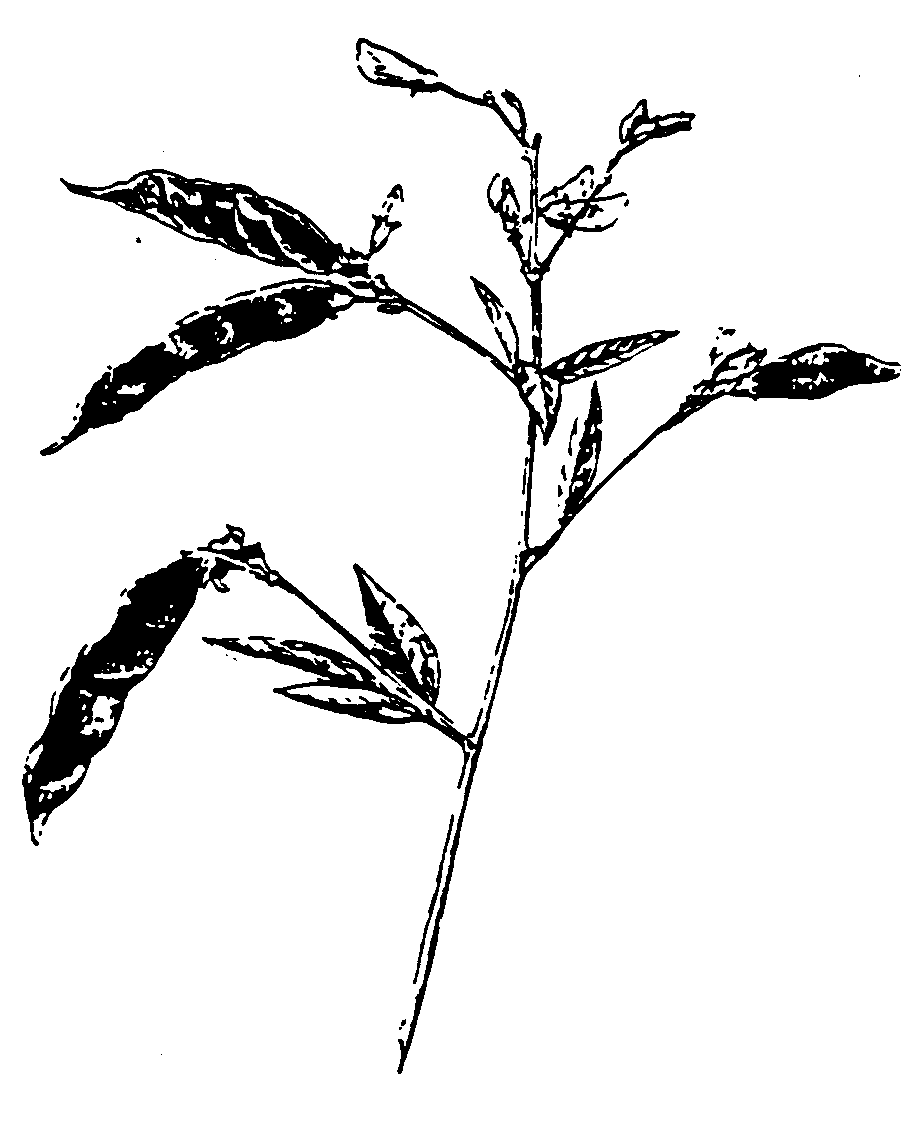
Planting Time: May - June
Soil Condition: Sandy soil rich in organic material compost, rotted leaves, manure).
Spacing: 3 feet between rows 2 - 3 feet between plants
Depth to Plant Seed: 1 inch
Days to Germination: 3 - 5
Planting Instructions: Seeds may be planted on beds or mounds. Keep the soil moist until the seeds germinate. Because this vegetable occupies the ground for a long time, it is best to plant it near the edges of the garden, or in other places around the house.
Care: Some gardeners put a mulch around the plants to conserve soil moisture and control the growth of weeds.
Harvesting: Plants flower when the weather turns cool. Pods are ready for picking in December or January. Seed collection is easy.
POINTED GOURD (PATOL) <see picture 26>

Planting Time: March to August
Soil Condition: Any soil well prepared with cow dung or compost.
Spacing: 1 plant per mound 3 - 5 feet between mounds
Depth to Plant Root: 3 inches
Days to Sprouting: 3 - 4
Planting Instructions: Plant one root cutting per mound. Select pieces of root from healthy, productive vines. Plants will continue to produce year after year.
Care: Put a large bamboo branch into the ground for the vines to climb. Mulching around the plants holds soil moisture, and keeps weeds from growing. Watch for insect damage. Dust with ashes, if necessary.
Harvesting: The fruits from Patol are ready to eat 2 months after planting. Harvest before the seeds become too big.
RADISH <see picture 27>
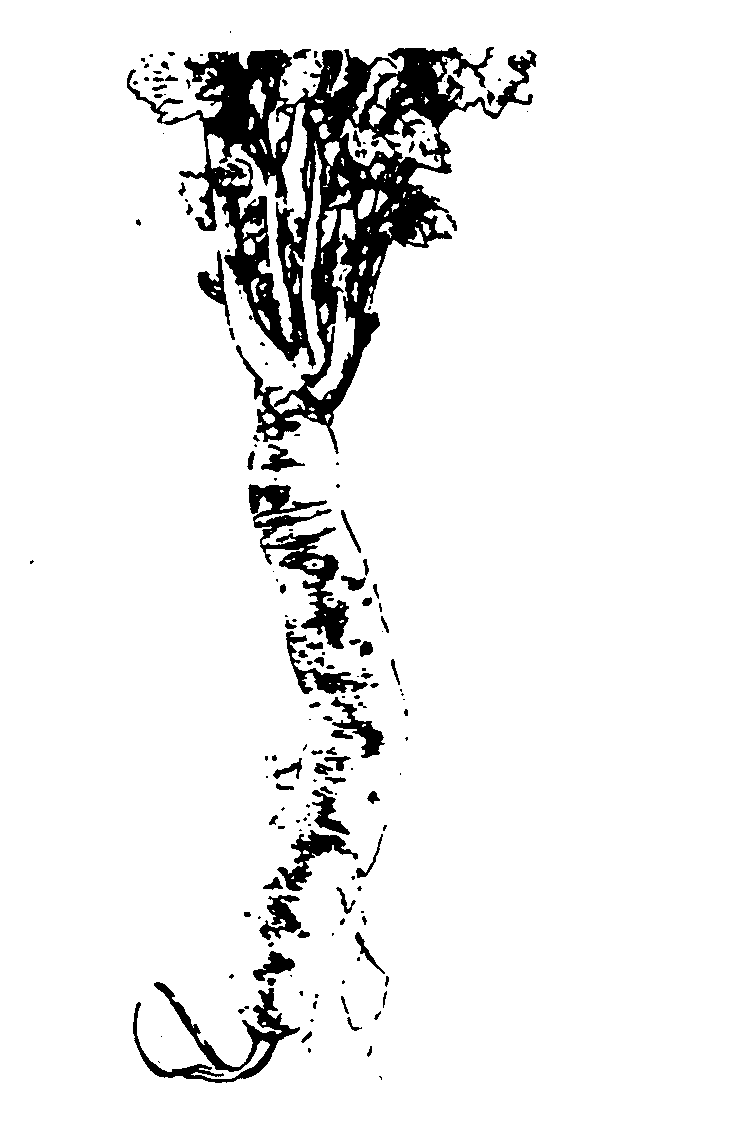
Planting Time: July to December
Soil Condition: Loose, sandy soil containing organic material (rotted cow dung, compost, etc.).
Spacing: 8" - 10" between rows 3" - 4" between plants
Depth to Plant Seeds: 1/4" - 1/2"
Days to Germination: 3 - 4
Planting Instructions: The seeds can be broadcasted or planted in rows. Some gardeners boardcast seeds thickly, and harvest the small plants as a leafy vegetable.
Care: Keep the beds moist and free of weeds. Watch for insect damage on the leaves. Dust with ashes, if necessary.
Harvesting: The leaves are ready to harvest 15 to 20 days after planting. The root is ready to eat 2 to 3 months after planting. Grow this vegetable as a "quick crop" for the leaves.
RIDGE GOURD <see picture 28>
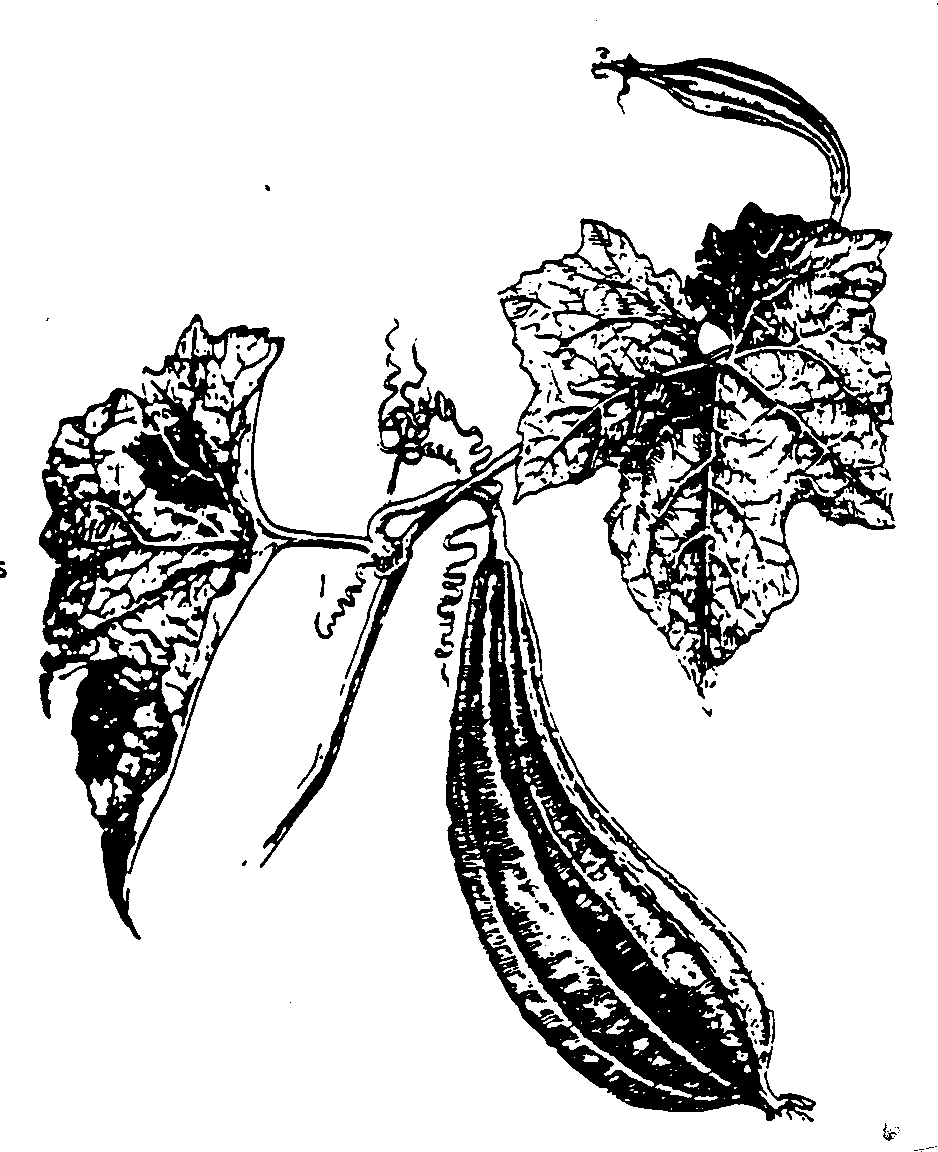
Planting Time: March, April, May
Soil Condition: Mix plenty of organic material into the soil (cow dung, compost, etc.
Spacing: 2 - 3 seeds per mound 2 - 3 feet between mounds
Depth to Plant Seed: 1/2" - 1"
Days to Germination: 7 - 10
Planting Instructions: Plant four to five seeds on a mound. Later, remove all but the three strongest looking plants.
Care: Grow on a trellis or put a large bamboo branch into the ground for the vines to climb. In the beginning it may be necessary to tie the vines to the support.
Harvesting: The gourds are ready for eating 10 to 12 weeks after planting. Keep gourds picked off the vines to prolong the harvest. Seed collection is easy.
SNAKE GOURD <see picture 29>

Planting Time: March, April, May
Soil Condition: Mix plenty of organic material into the soil (cow dung, compost, etc.)
Spacing: 2 - 3 seedlings per mound 2 - 3 feet between mounds
Depth to Plant Seed: 1/4" - 1"
Days to Germination: 7 - 10
Planting Instructions: Plant four to five seeds on a mound. Later, remove all but the three strongest looking plants.
Care: Put a large bamboo branch into the ground for the vines to climb. In the beginning it may be necessary to tie the vines to the support.
Harvesting: The gourds are ready for eating 3 to 4 months after planting. Pick the gourds often to prolong the harvest. Seed collection is easy.
SPINACH <see picture 30>
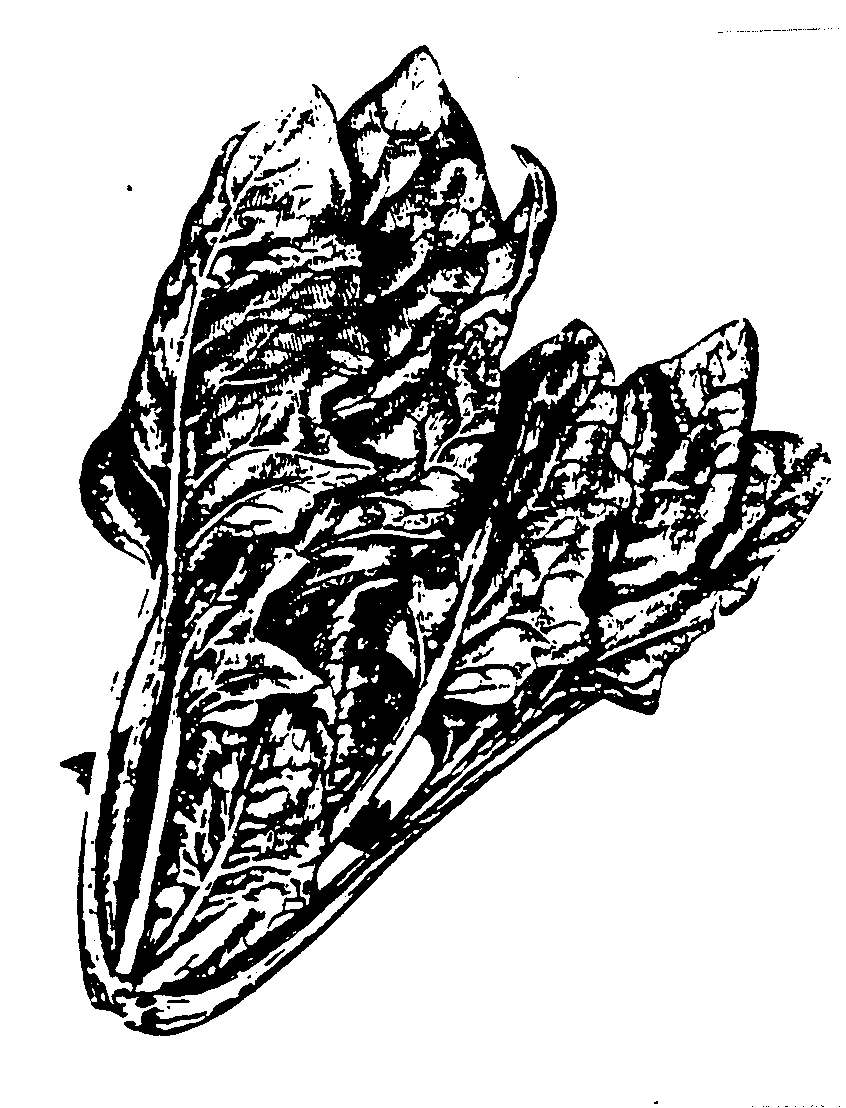
Planting Time: September to December
Soil Condition: Mix plenty of organic material into the beds.
Spacing: 6" - 8" between rows 6" between plants
Depth to Plant Seed: 1/2"
Days to Germination: 3 - 7
Planting Instructions: Soak the seeds for 12 hours. Sow in rows or broadcast the seed over the top of a bed. Keep the bed moist until the seeds germinate.
Care: Many gardeners mulch the beds to preserve moisture and keep the weeds from growing. Give liquid fertilizer (manure tea) every week during the growing season.
Harvesting: The first leaves will be ready to harvest four to five weeks after sowing. Cut the outer leaves often to prolong the harvest. Seed collection is easy. SWEET CORN <see picture 31>

Planting Time: September to November February to June
Soil Condition: Sandy soil rich in organic materials (compost, well-rotted manure, etc.)
Spacing: 2 feet between rows 6 inches between plants
Depth to Plant Seed: 1 inch
Days to Germination: 4 - 6
Planting Instructions: Plant seeds directly in the garden. Prepare the beds with plenty of well-rotted cow dung and compost,
Care: Many gardeners mulch the beds to conserve soil moisture and suppress weeds. It corn does not grow well, maybe the soil is acid. This can be corrected by adding powdered lime (chun) to the soil.
Harvesting: Harvest the corn when the kernels are still soft and milky. Seed collection is easy.
SWEET POTATO (VINING TYPE) <see picture 32>
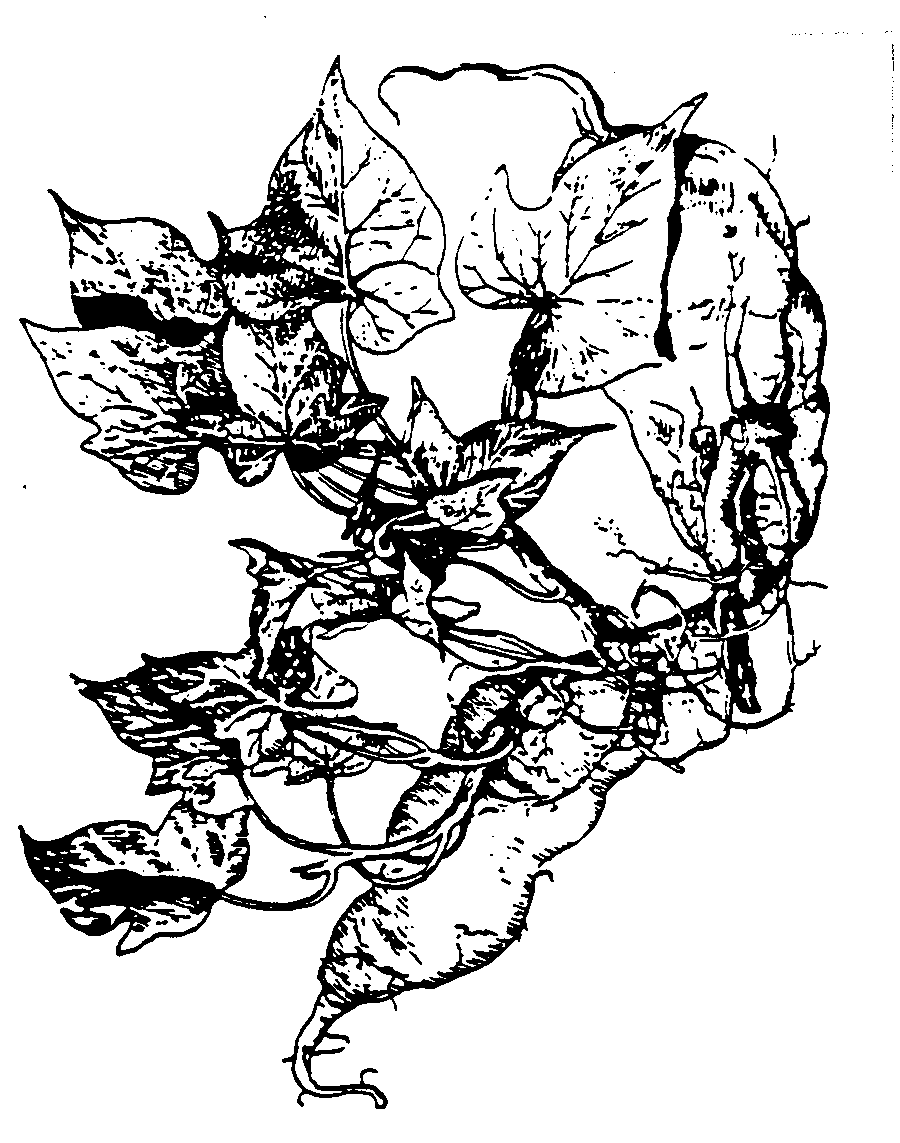
Planting Time:
For Tubers: October - November For Leaves: Any month
Soil Condition: Sandy, loose soil containing some well-rotted manure or compost
Spacing: 2 feet between rows 8" - 10" between plants
Planting Instructions: Plant by using 1S inch vine cuttings. The cuttings at the tip are the best. Plant the cutting at an angle, so that half (or two-thirds) is under the earth, leaving the rest of the stem and vine tip above the ground. If vine cuttings are not available, cut a sprouting tuber into sections and plant the pieces leaving the sprouts above the ground.
Care: Remove weeks once or twice until the vines cover the beds.
Harvesting: The six inch vine tips make an excellent vegetable, rich in vitamins and minerals. Harvest the tips around the year. Tubers are ready to harvest 5 to 6 months after planting. Let them cure (rest) in an open but covered place for a week before eating.
SWEET PUMPKIN (SQUASH) <see picture 33>

Planting Time: August to November
Soil Condition: Any soil containing generous amounts of organic material (cow dung, compost, rotted leaves)
Spacing: 2 plants per mound 3 feet between mounds
Depth to Plant Seed: 1 inch
Days to Germination: 4 - 10
Planting Instructions: Plant five to six seeds on a mound. When the seedlings are up, remove all but the best two plants.
Care: Sweet pumpkin can be grown on mulched beds, or on a trellis to save space. Over-watering causes excessive leaves and less fruit. If the leaves become too many, pinch off the tips of the vine.
Harvesting: Leaves and Stem tips can be harvested after two months. Fruits are ready in our months. Seed collection is easy.
SWORD BEAN (MAKHON SHEEM) <see picture 34>

Planting Time: July, August, September
Soil Condition: Any soil containing some organic material (compost, manure, rotted leaves, etc.
Spacing: 1 - 2 plants per mound 4 - 6 feet between mounds
Depth to Plant Seed: 1-1/1 inches
Days to Germination: 3 - 7
Planting Instructions: Plant four to five seeds on a mound. Later, remove all but one or two seedlings.
Care: Many gardeners mulch the mounds after the seedlings have germinated. Watch for insect damage on the flowers and stem tips. Dust with ashes, if necessary
Harvesting: Beans are ready to eat 10 weeks after planting. Continuously pick off the tender beans to prolong the harvest. Seed collection is easy.
TOMATO <see picture 35>

Planting Time: September, October November, December
Soil Condition: Any soil containing some compost or other organic materials. The beds should be well drained.
Spacing: 24" - 36" between rows 18" - 24" between plants
Depth to Plant Seed: 1/4" to 1/2"
Days to Germination: 6 - 10
Planting Instructions: Plant seeds in a seedbox or seedbed. When the seedlings are 3 inches tall, transfer them to another seedbox. Plant them deeper than they were growing in the first seedbox. When the plants are 10 inches tall, transplant them to the permanent beds. Some gardeners transplant only once, while others sow seeds directly in the garden.
Care: Stake the young plants and prune off the excess branches.
Harvesting: Leave the tomatoes on the plant until they are fully ripe, about 3 months after planting. Seed collection is easy.
TURNIP <see picture 36>

Planting Time: September to December
Soil Condition: Loose, sandy soil containing some organic material (rotted cow dung, compost, etc.)
Spacing: 8" - 12" between rows 4" between plants
Depth to Plant Seeds: 1/2 inch
Days to Germination: 5 - 8
Planting Instructions: Seeds can be planted in rows or broadcasted over the top of a bed.
Care: If the seed is broadcasted, the seedlings should be thinned out until the plants are each 4 inches apart.
Harvesting: The turnip leaves make a tasty vegetable. The root is ready to eat 3 months after planting.